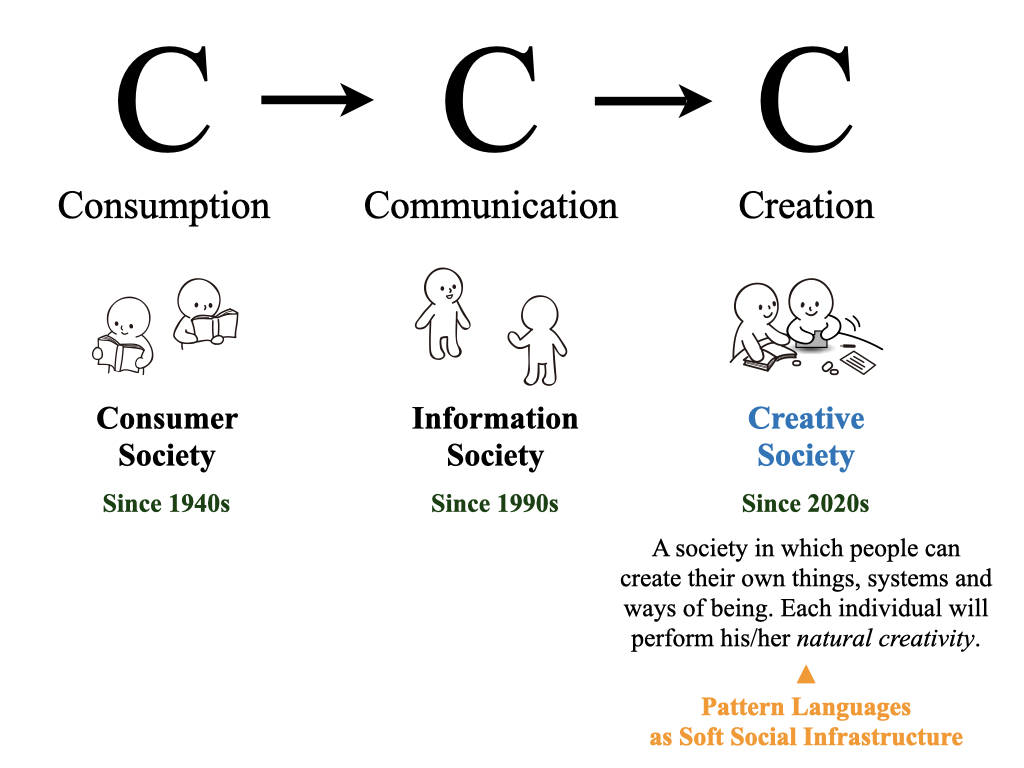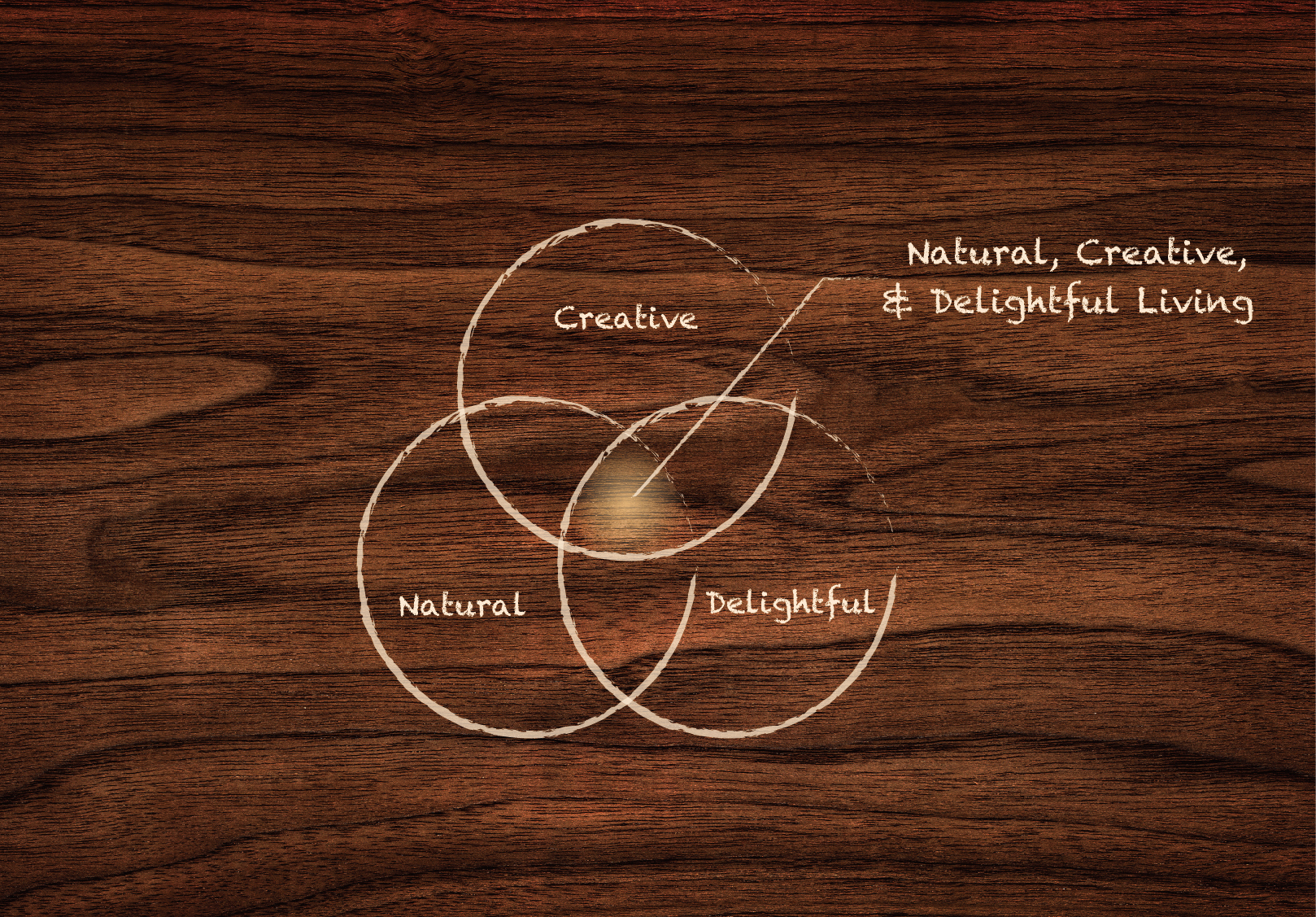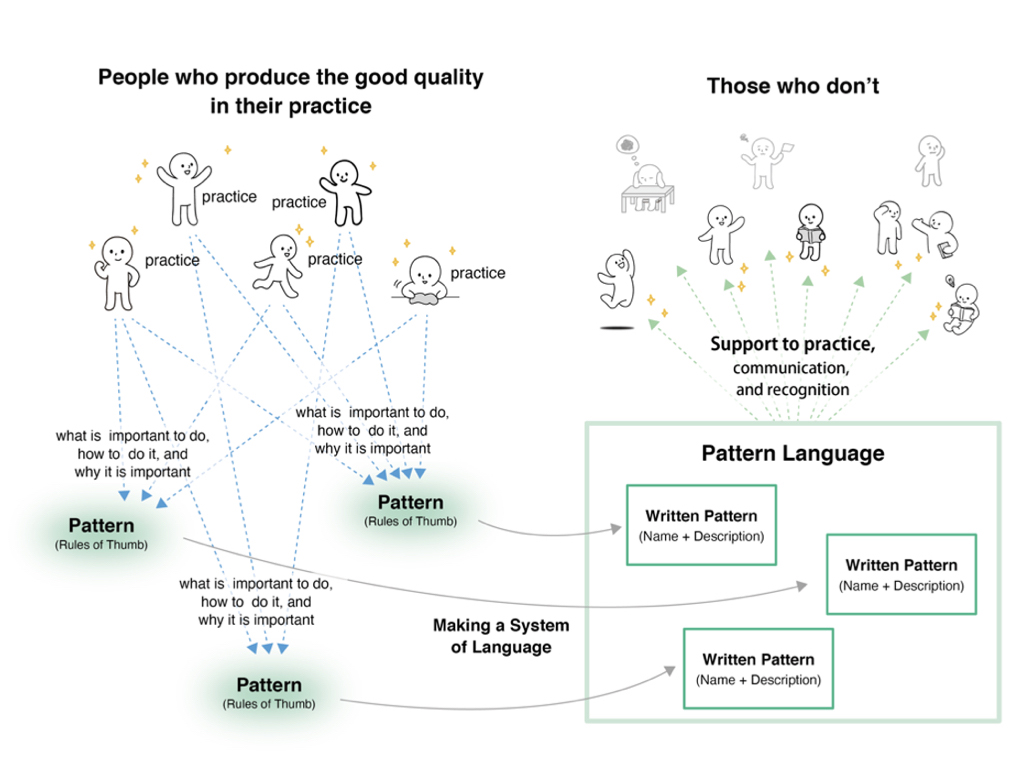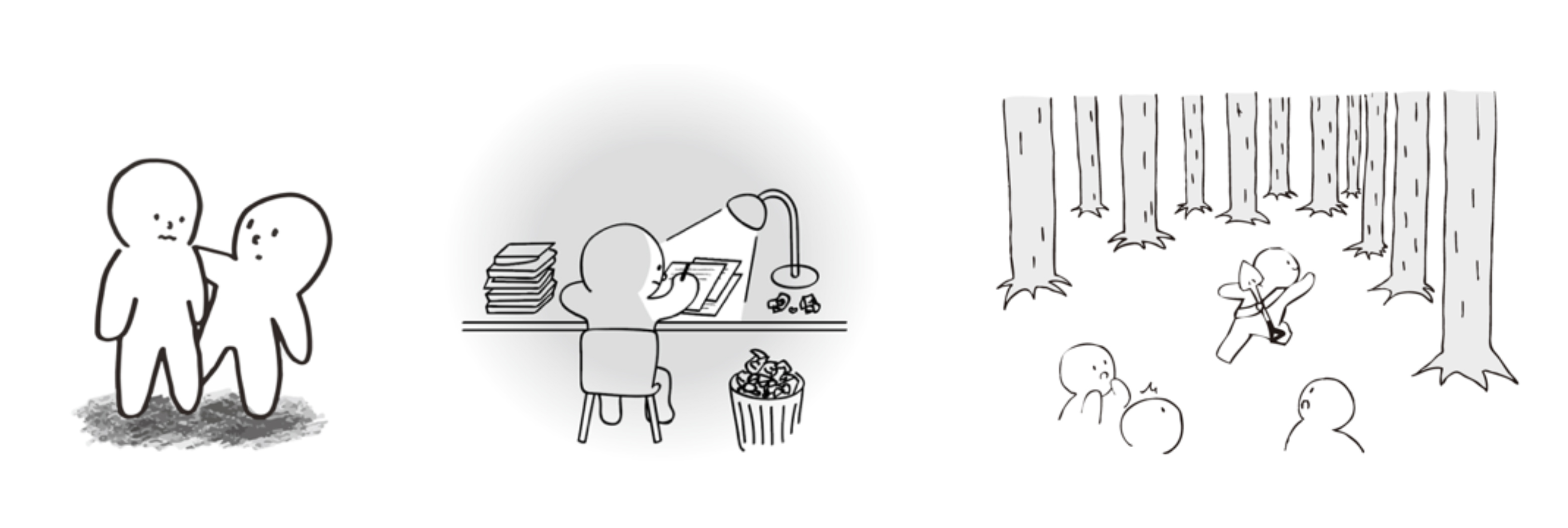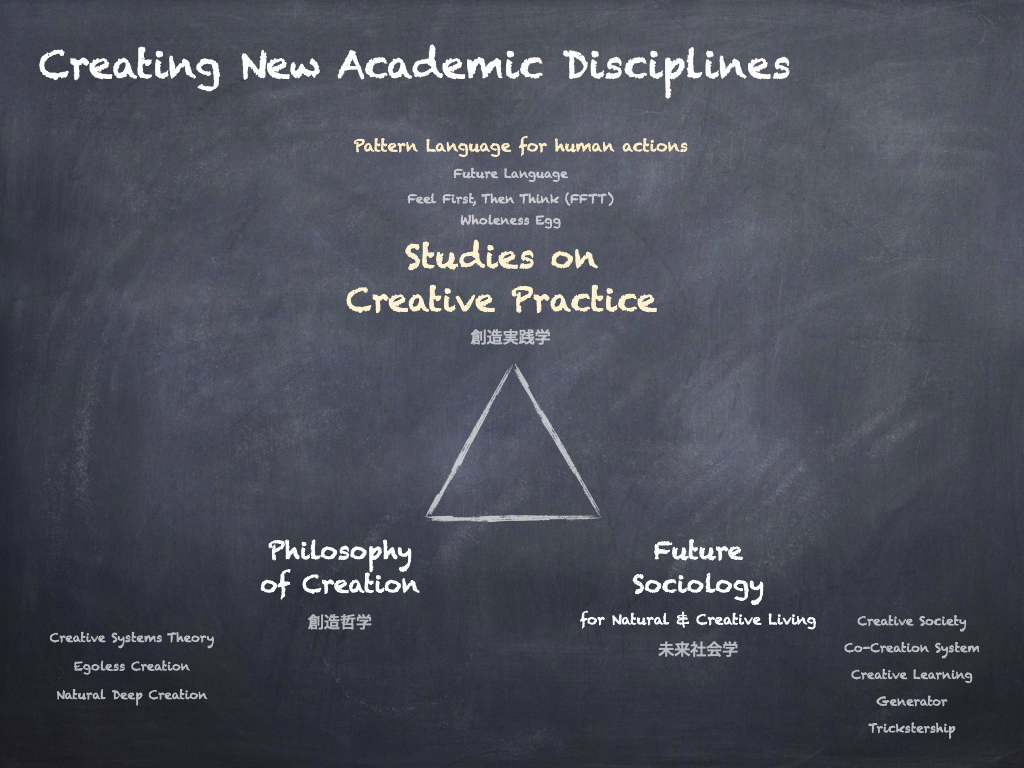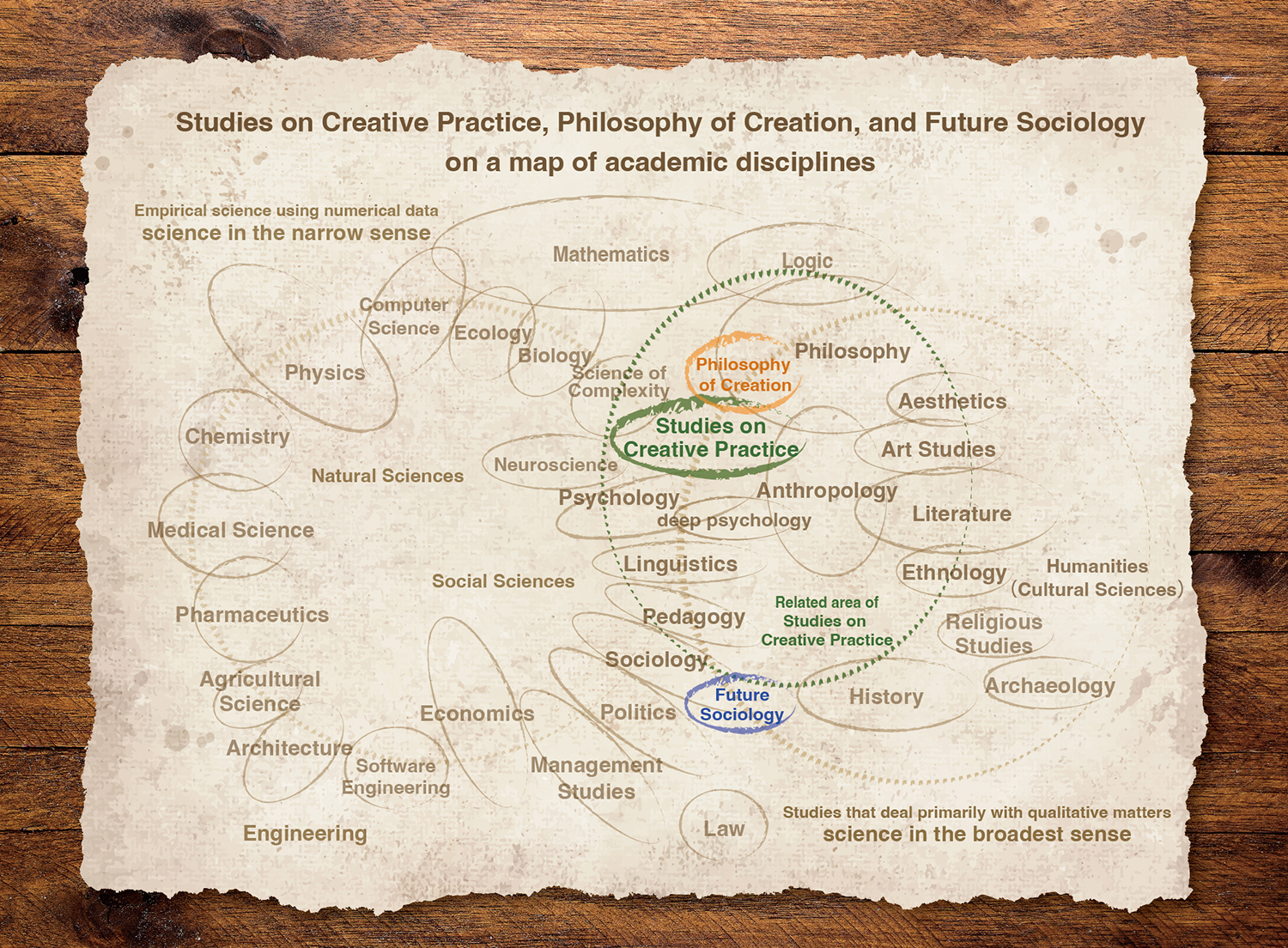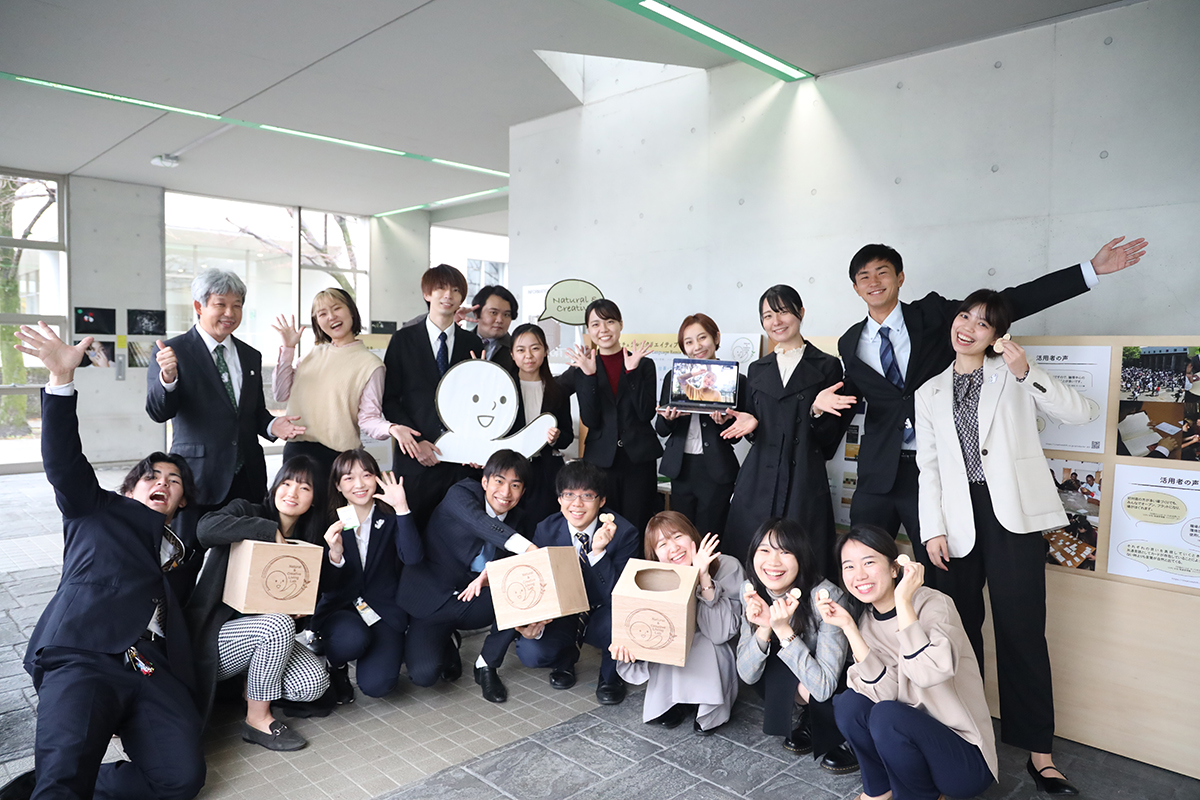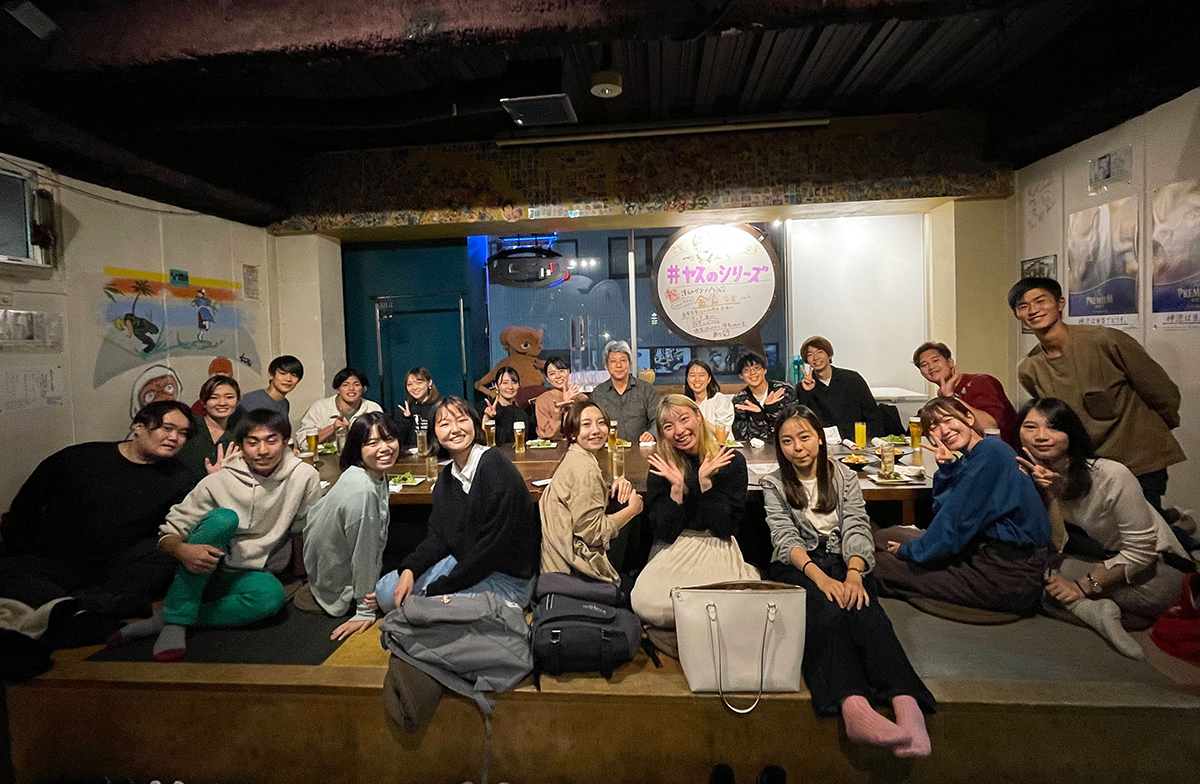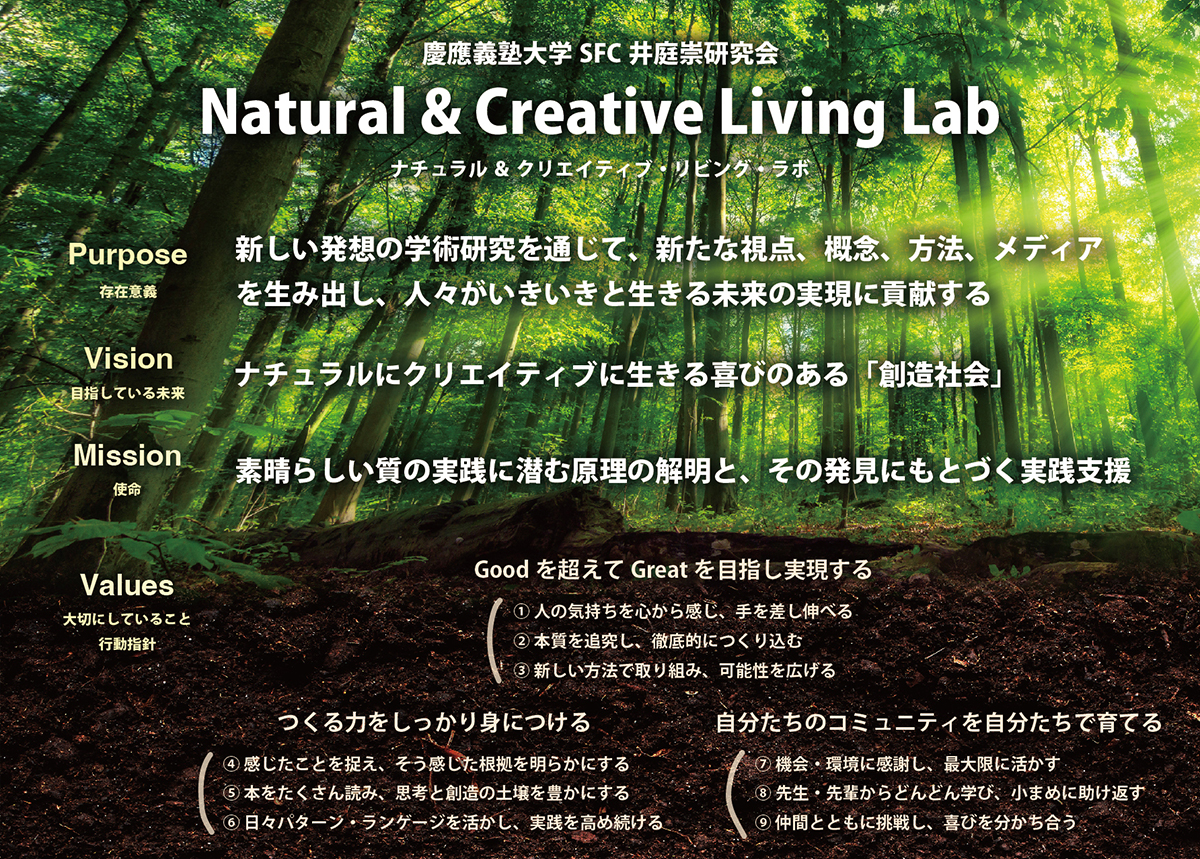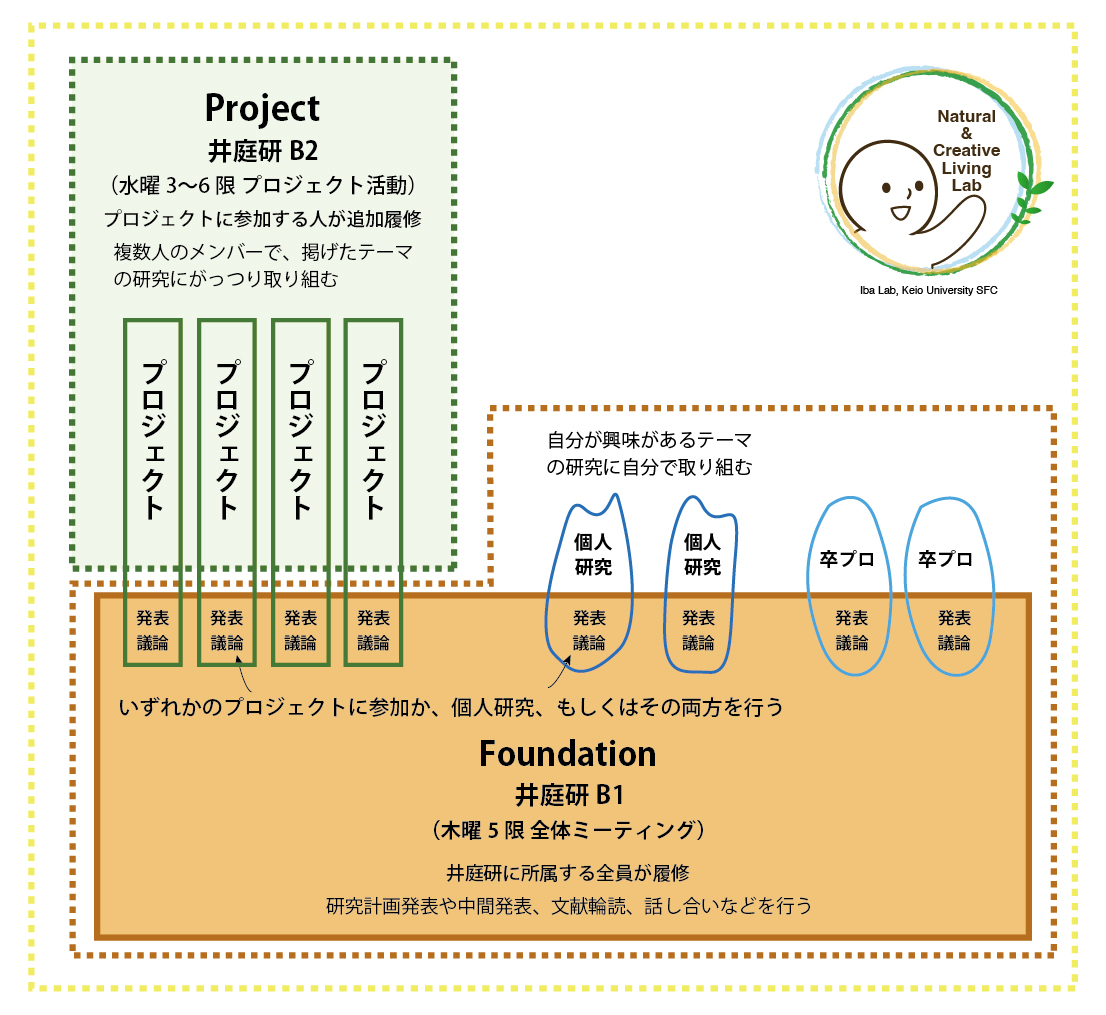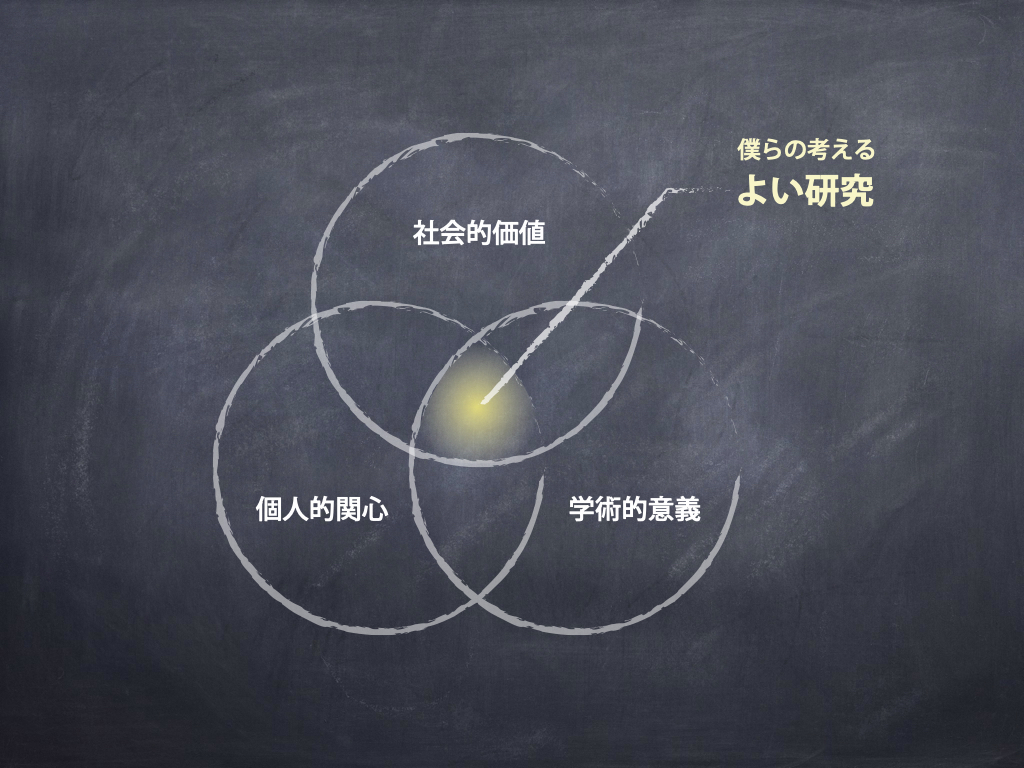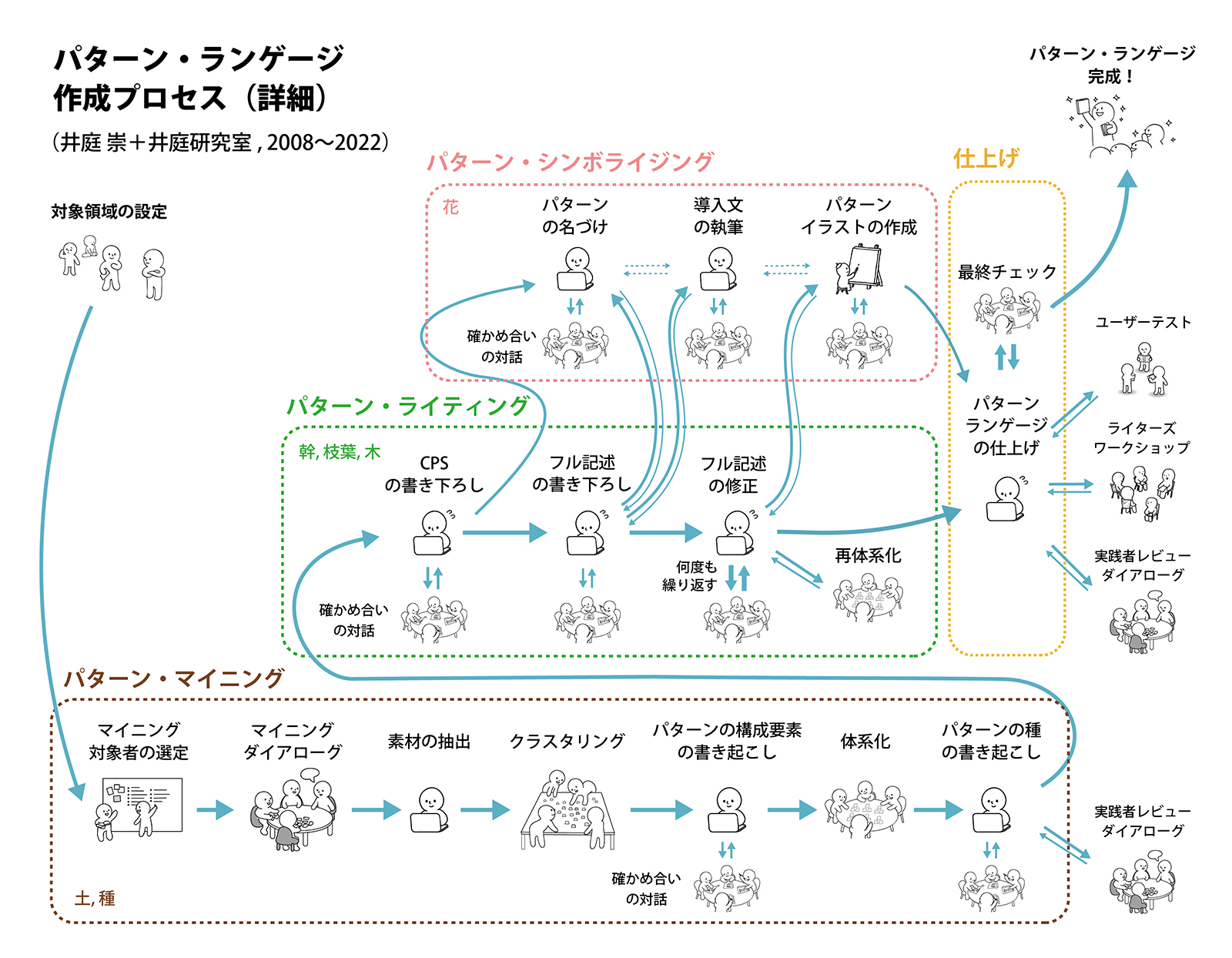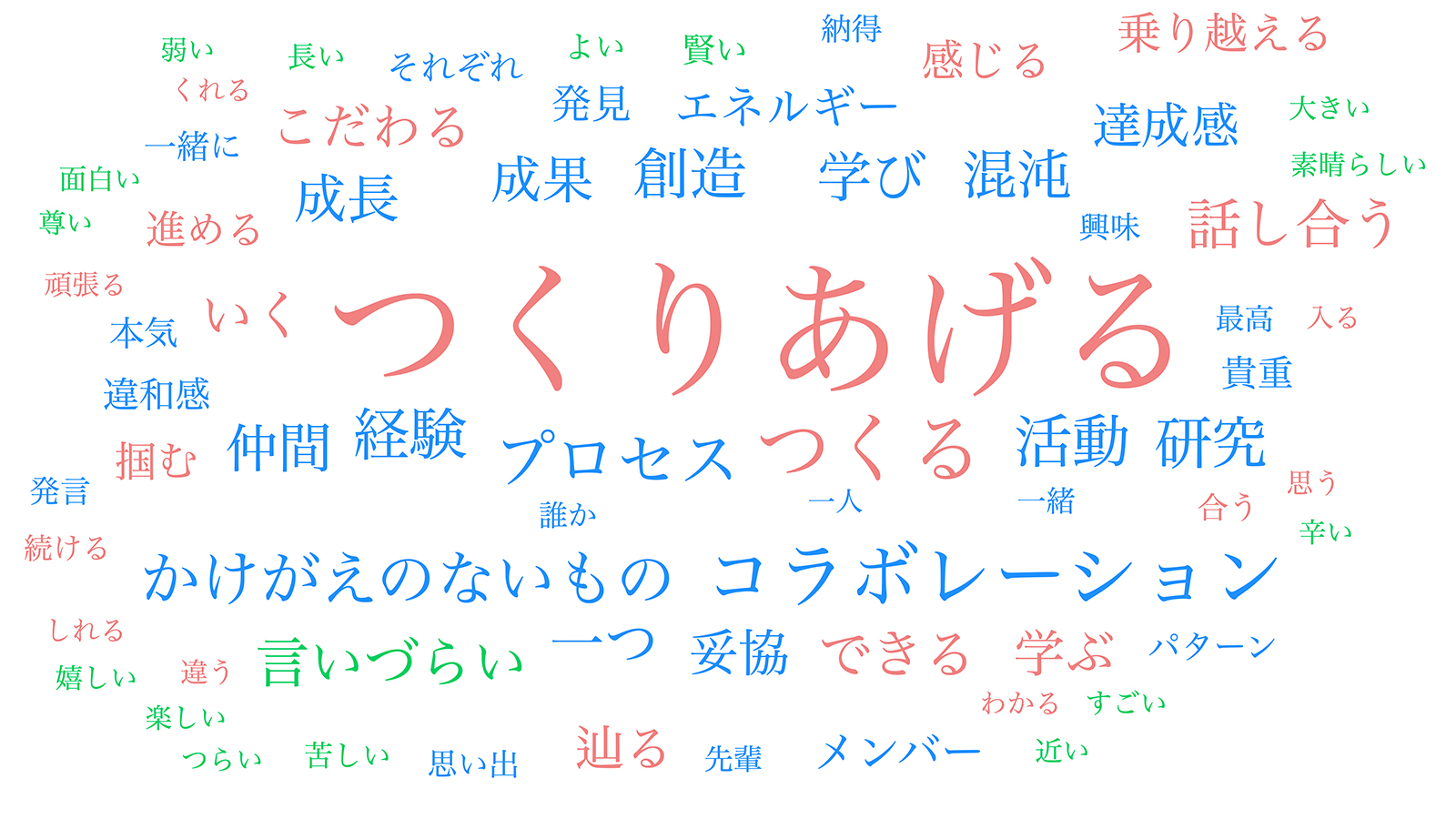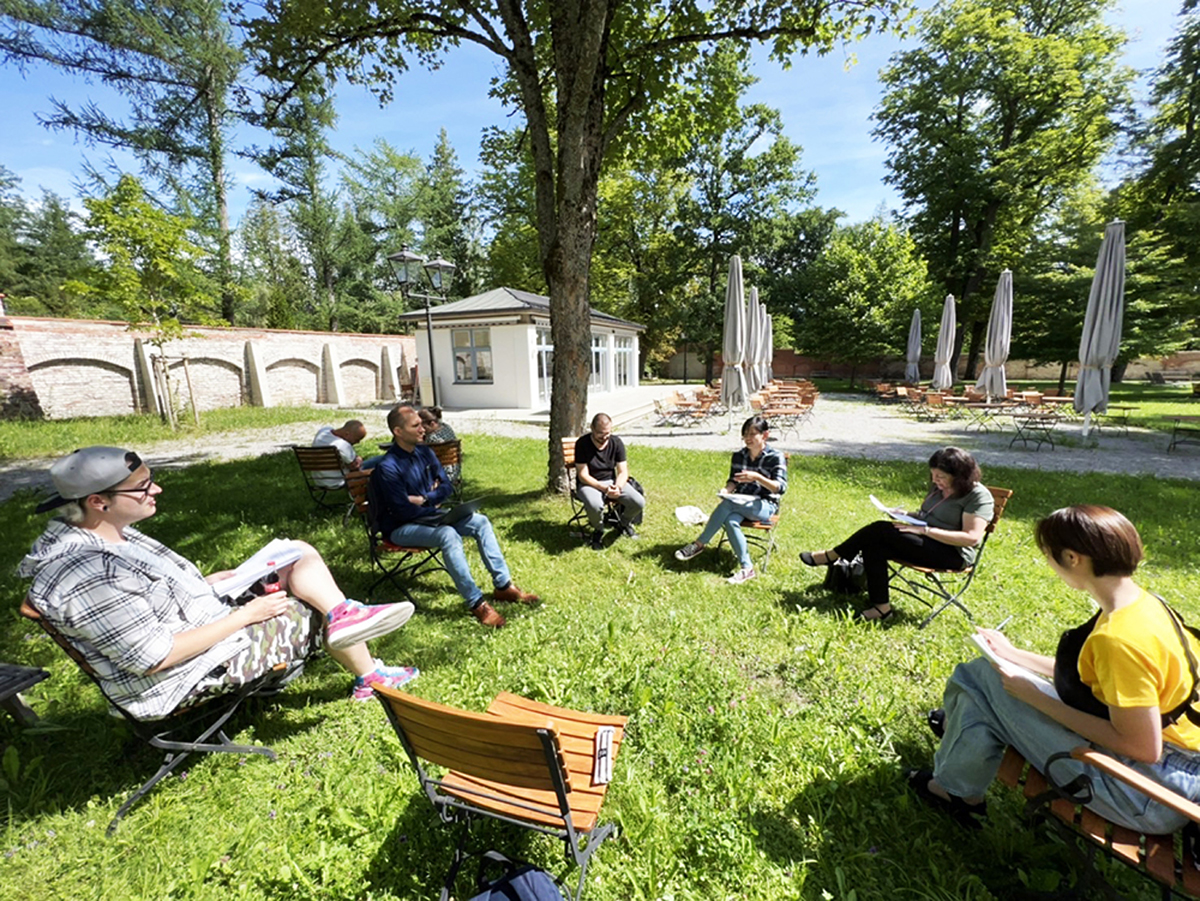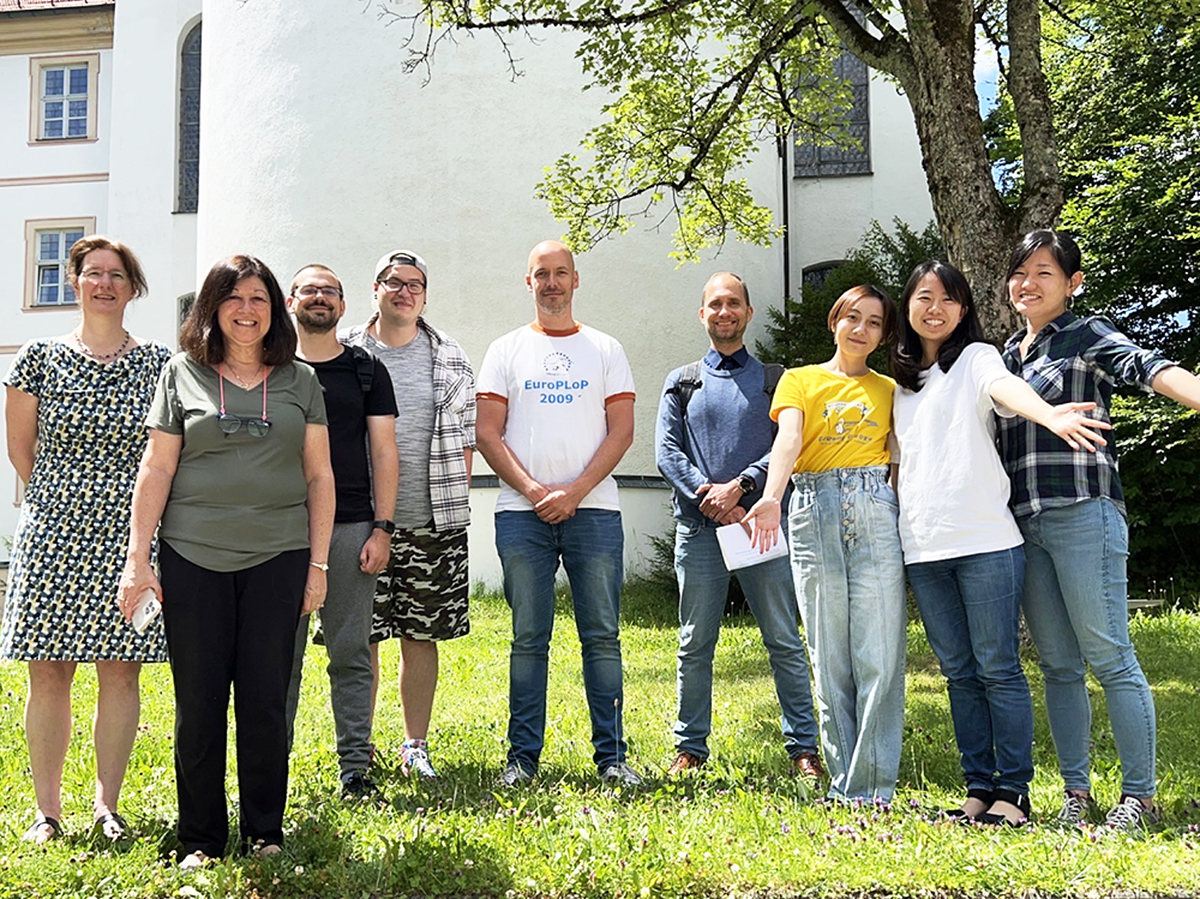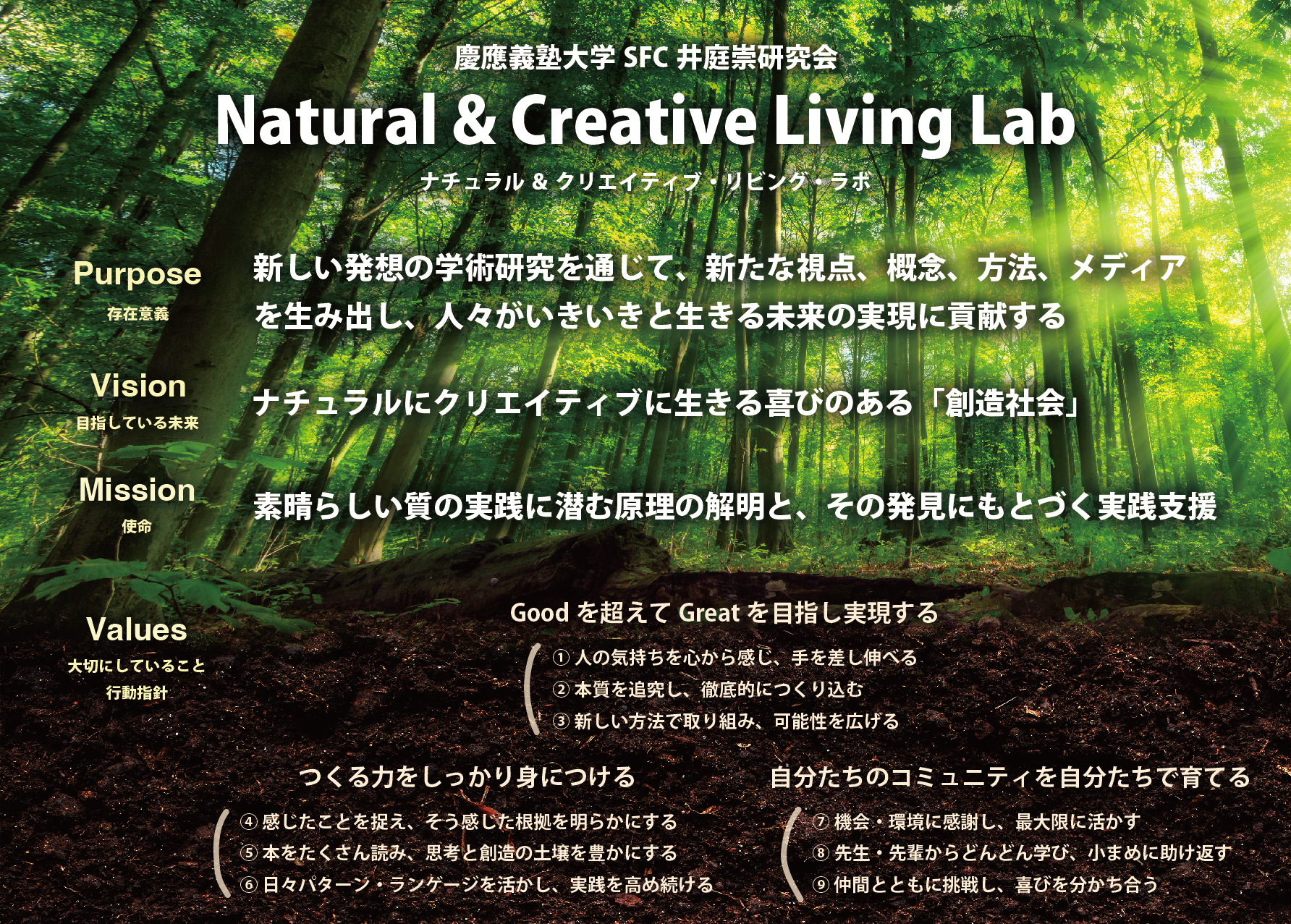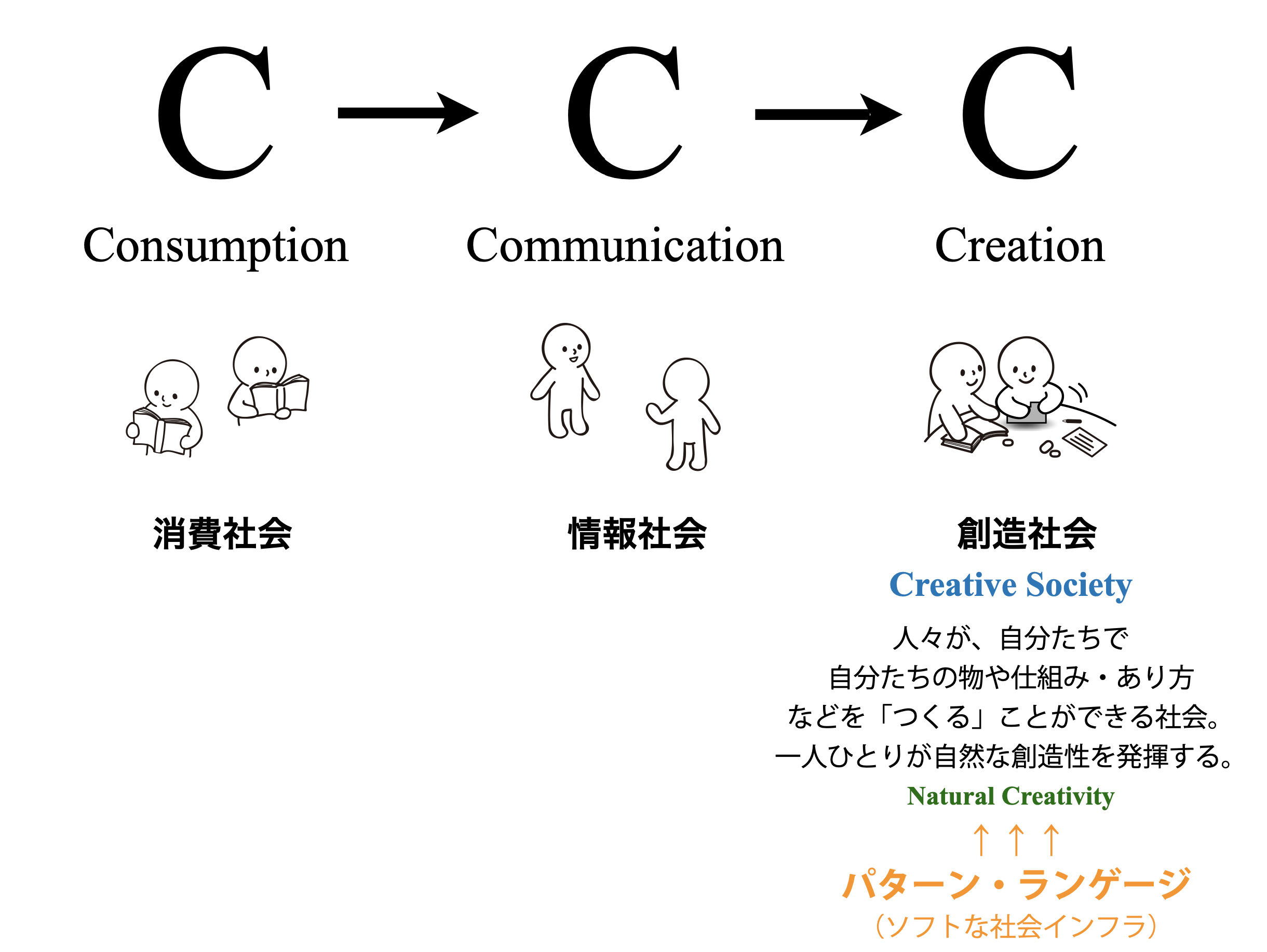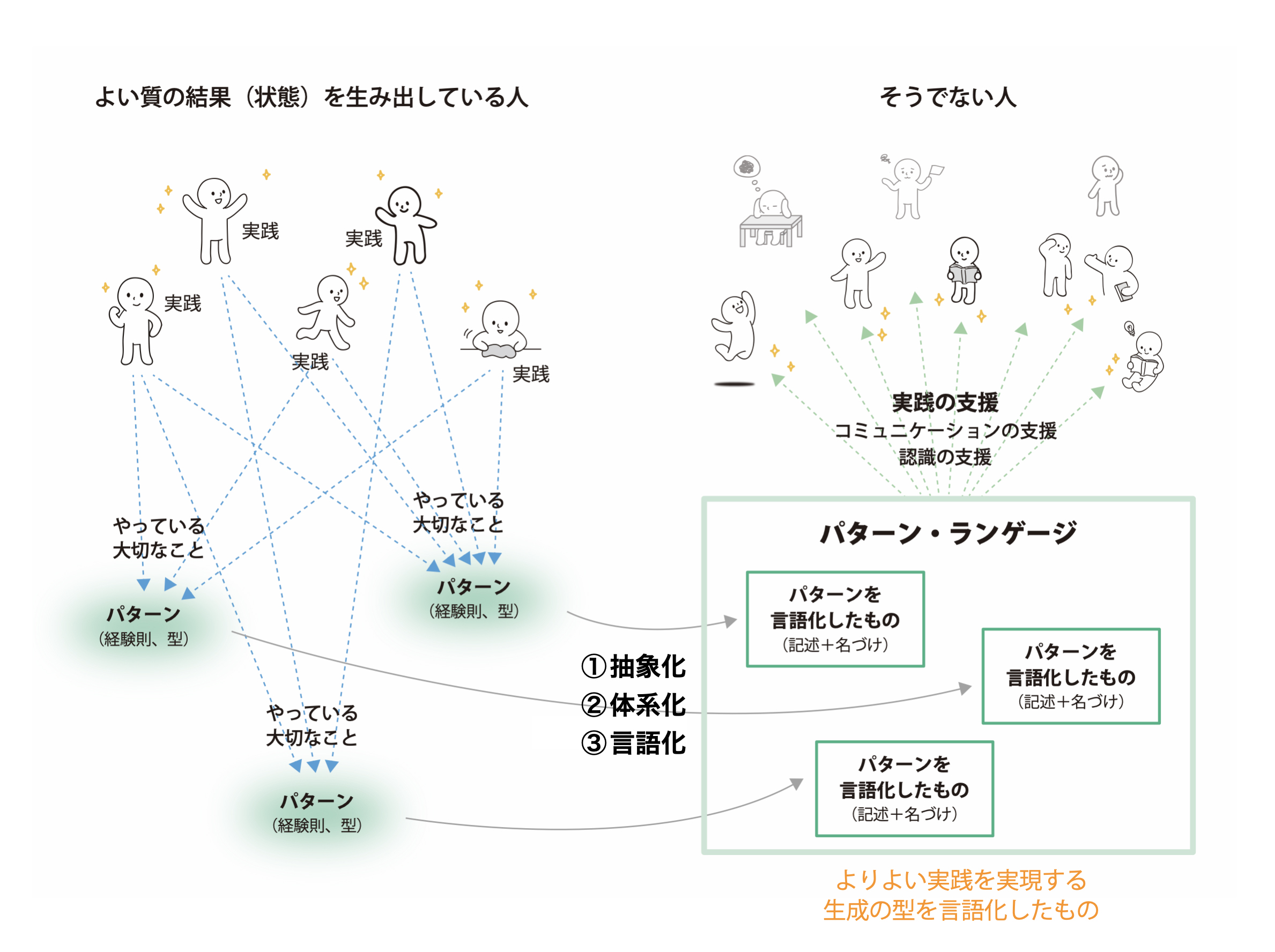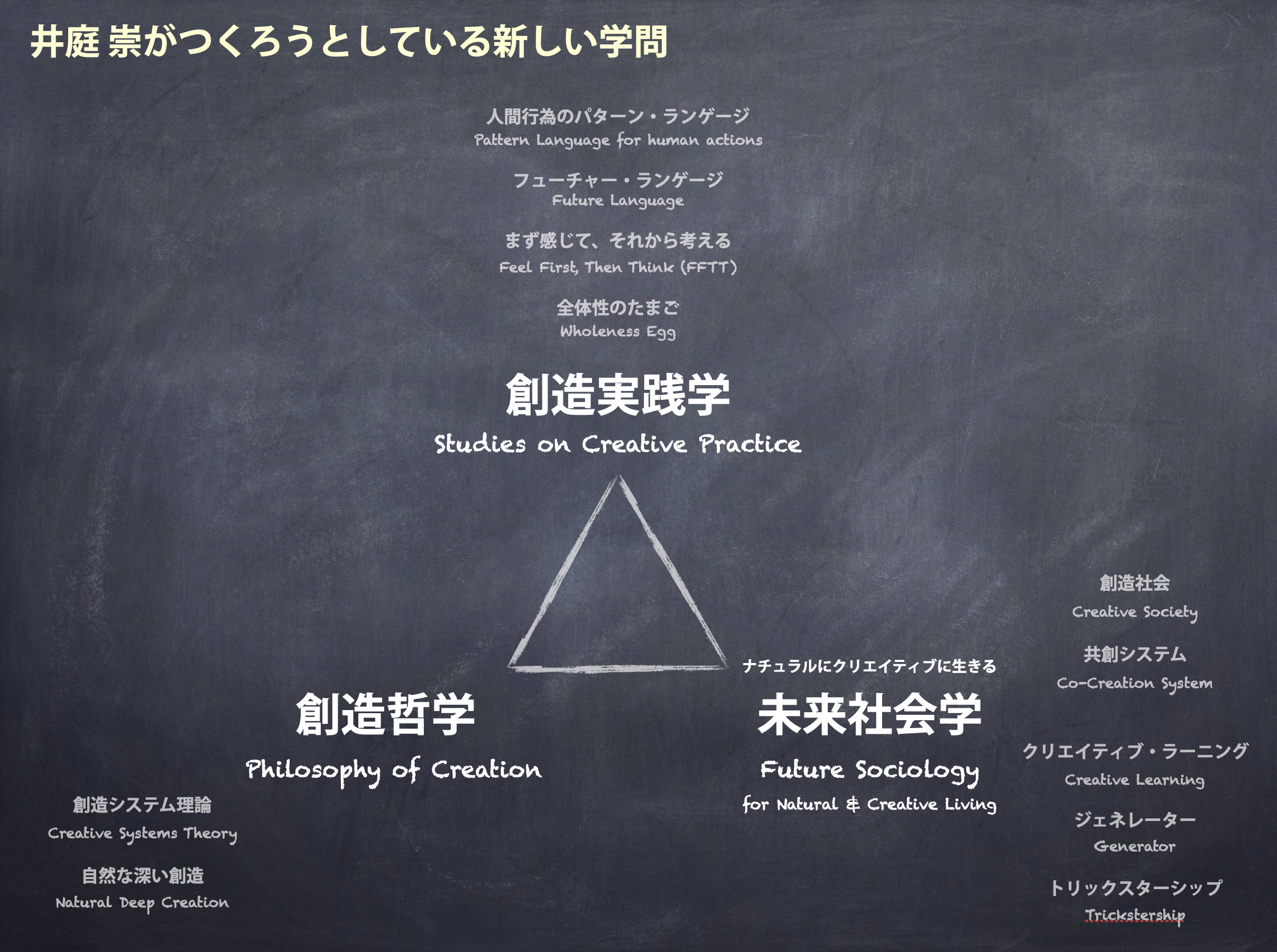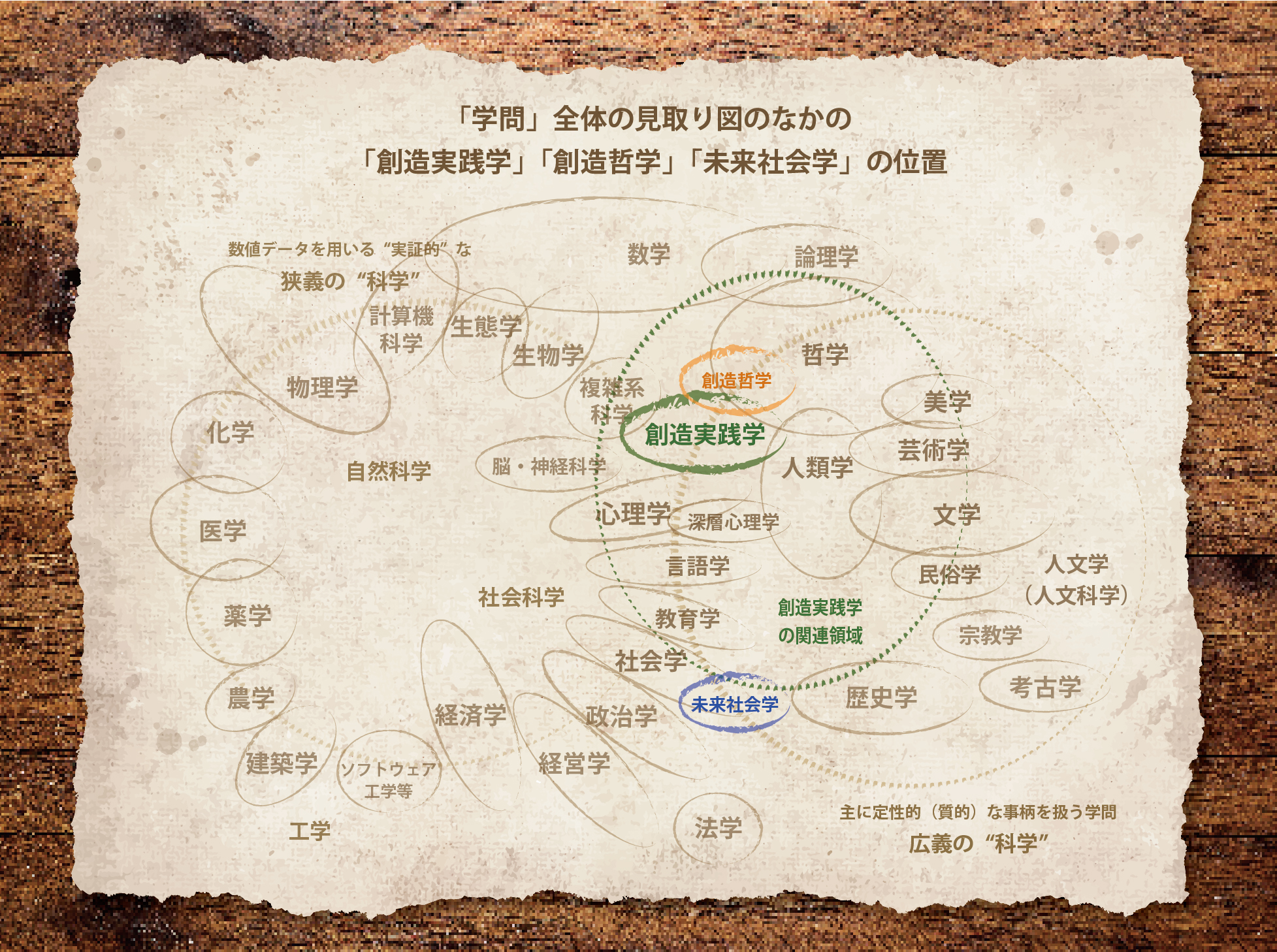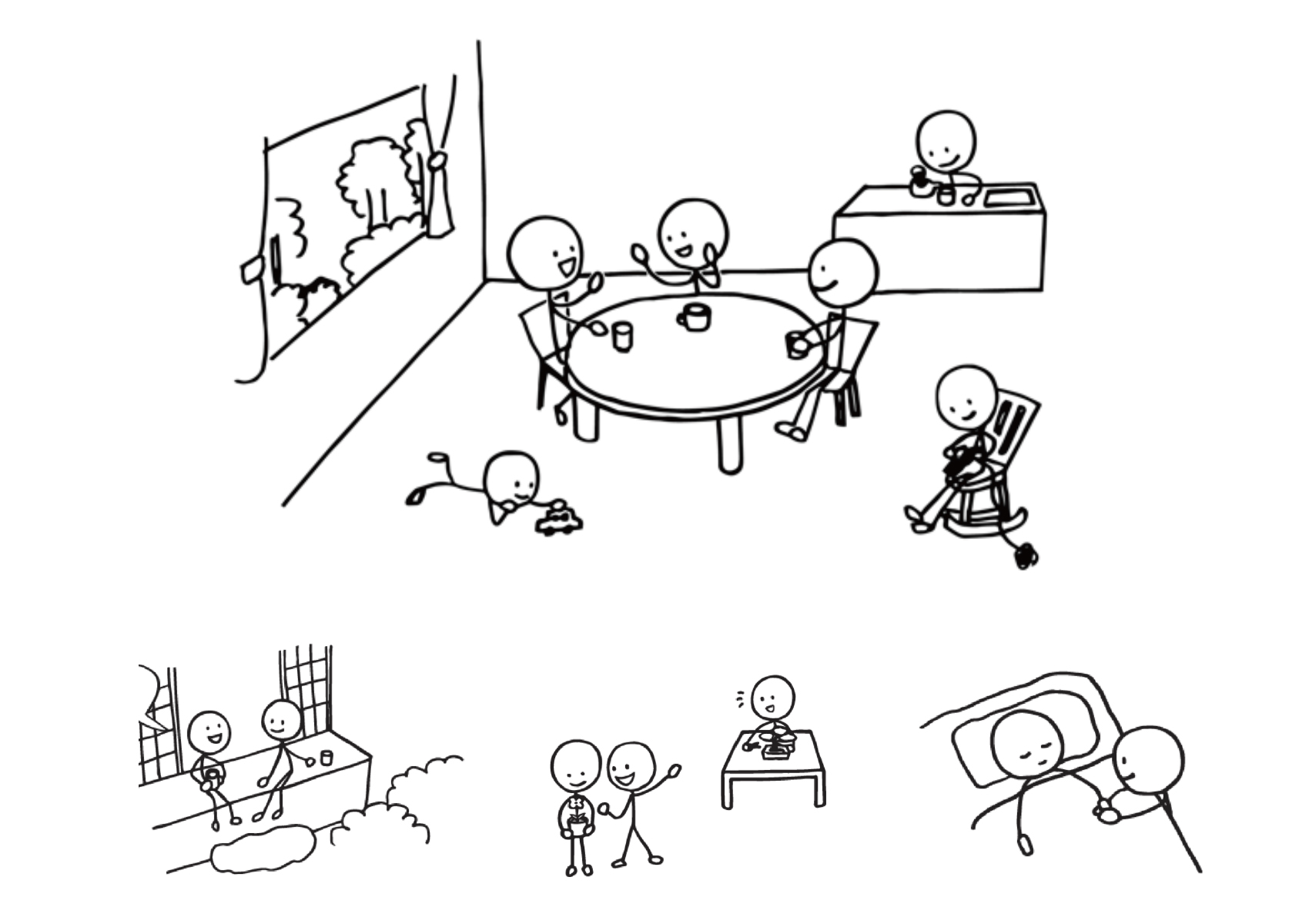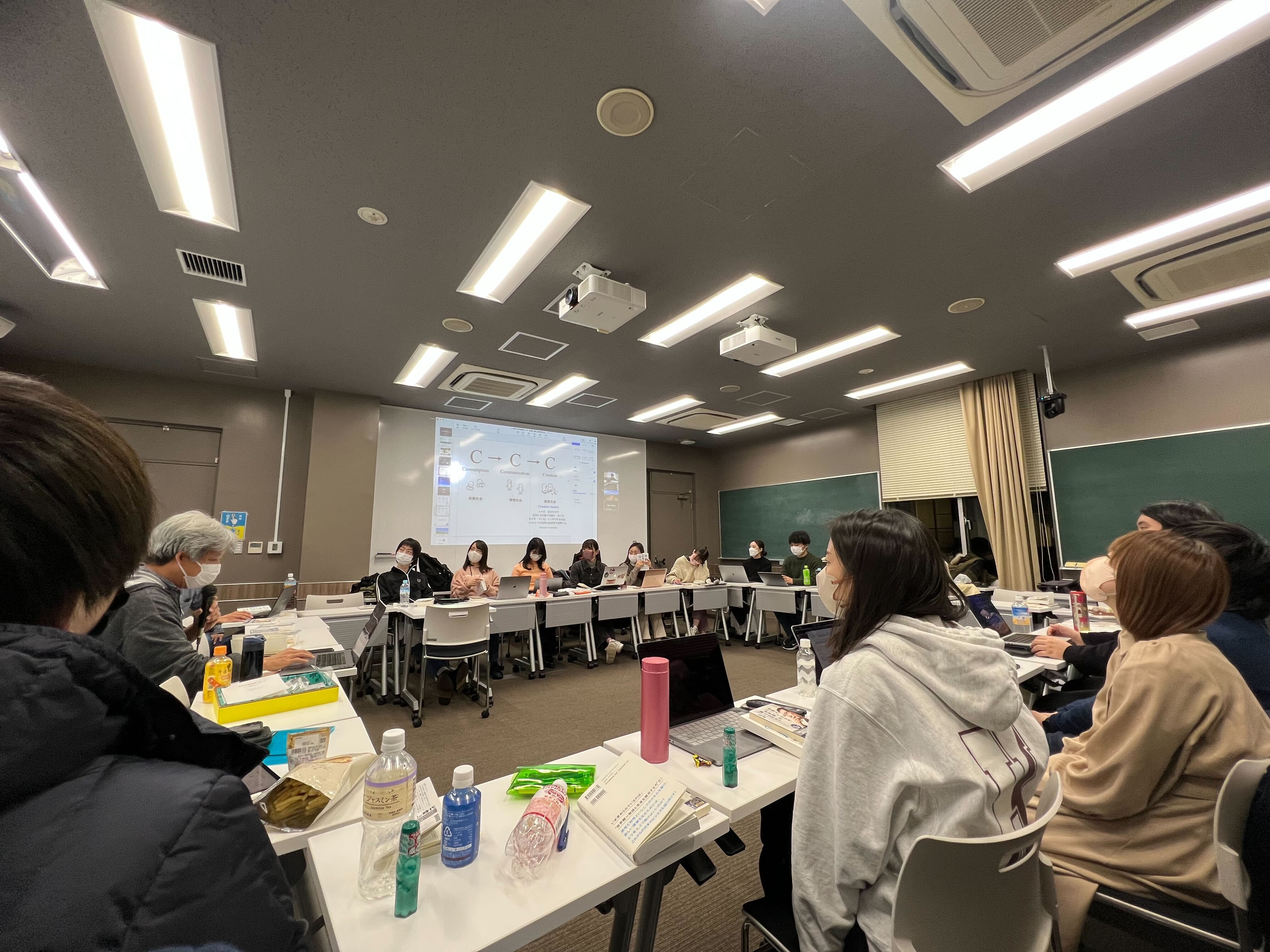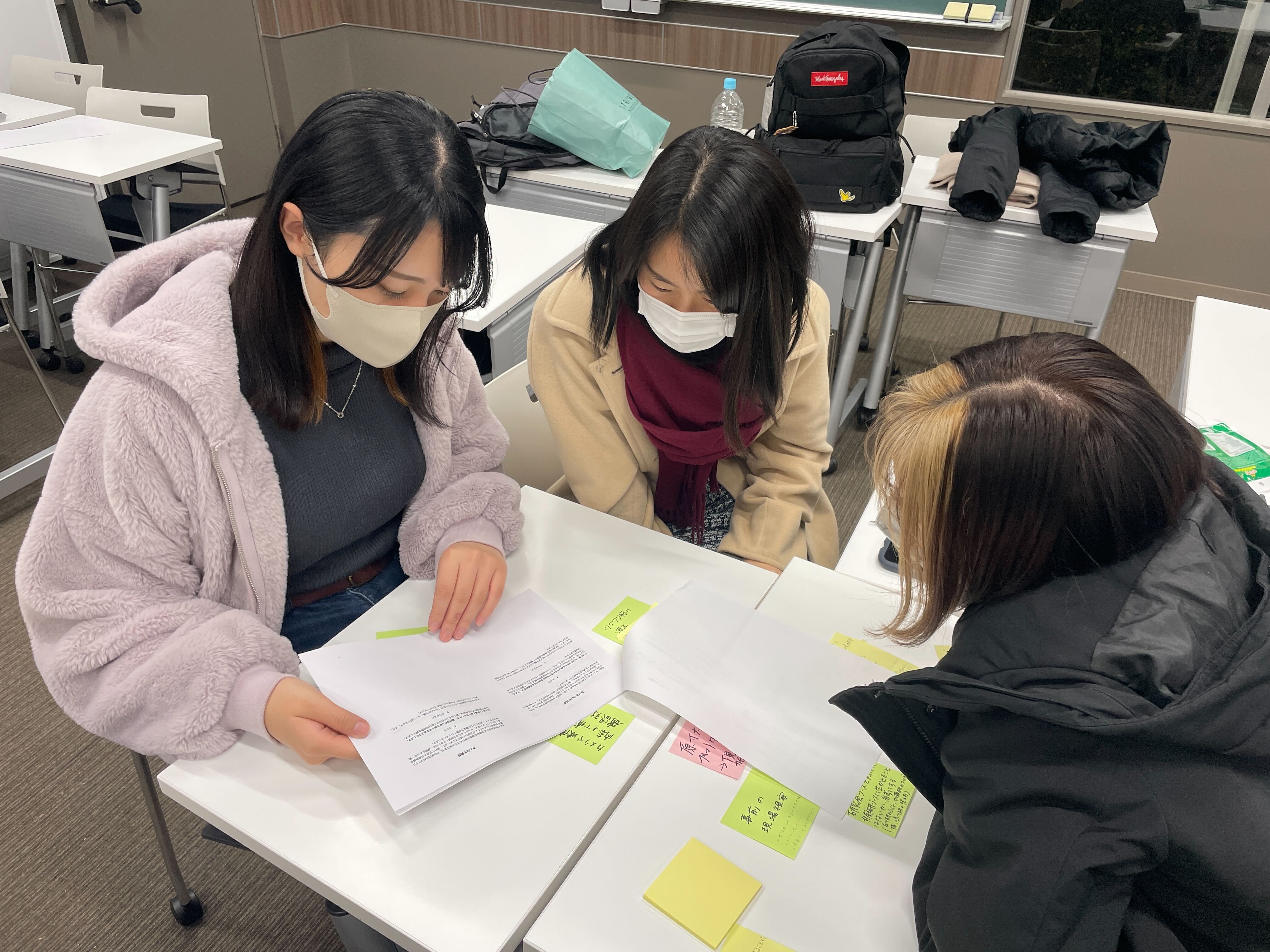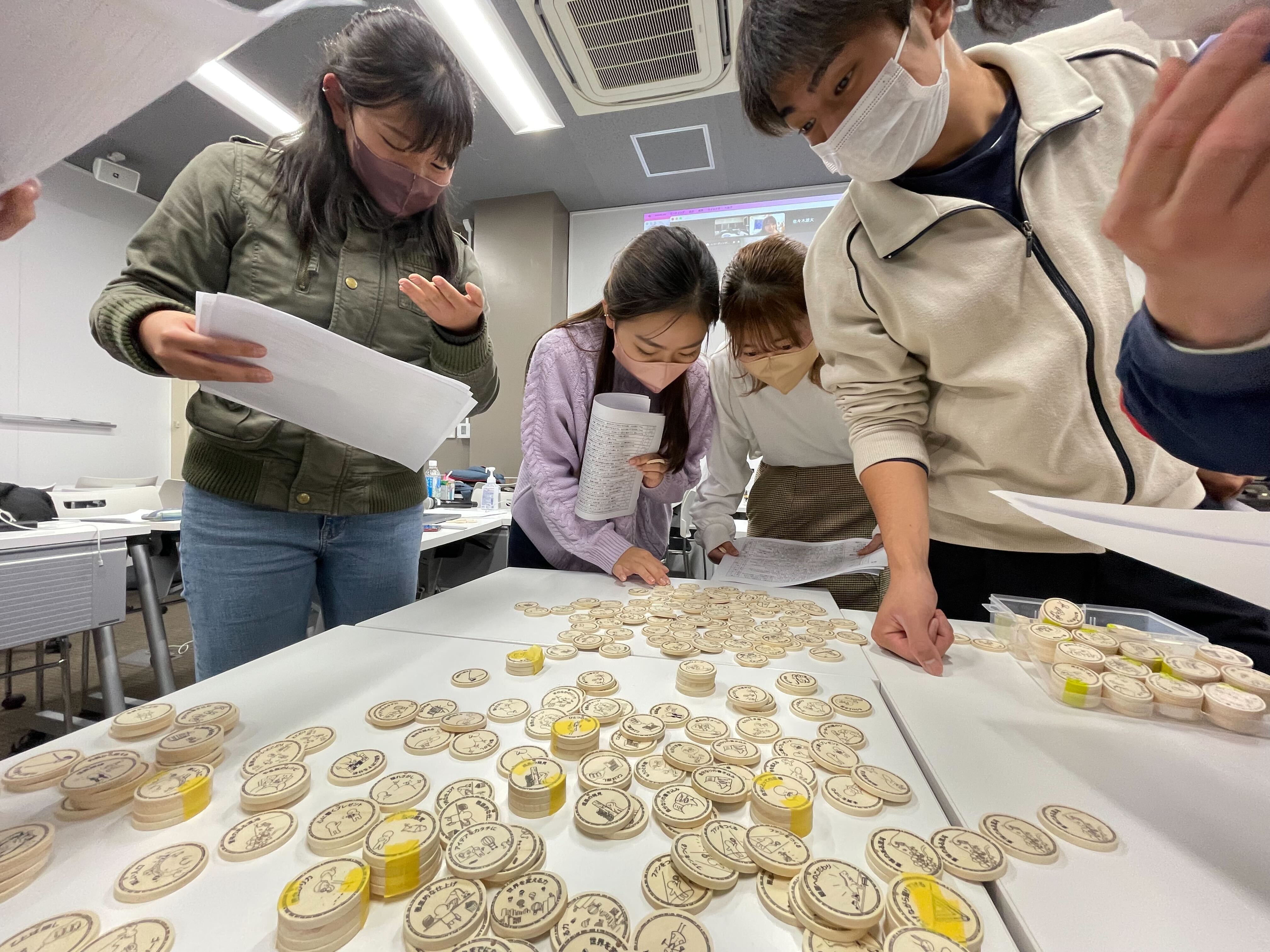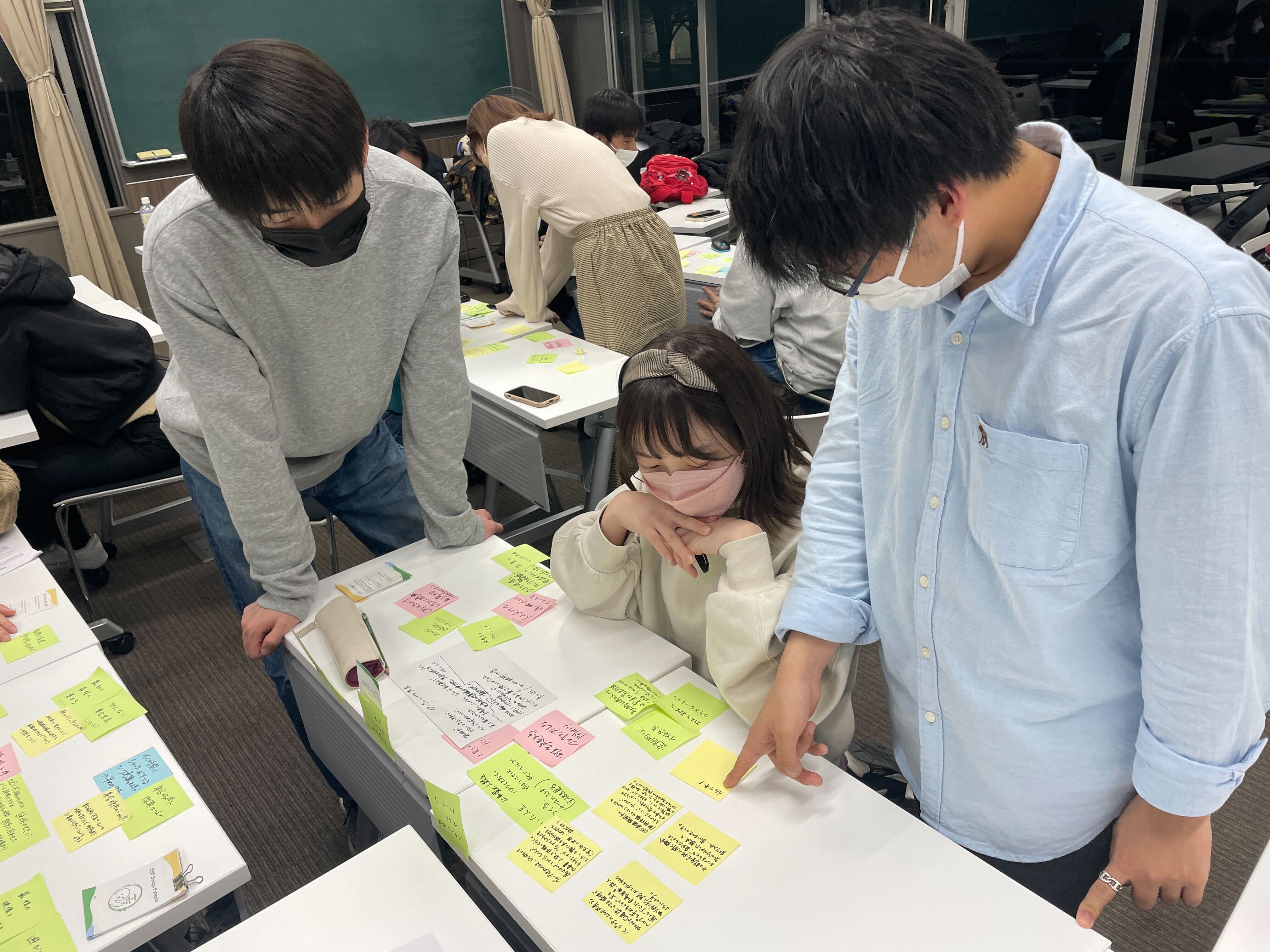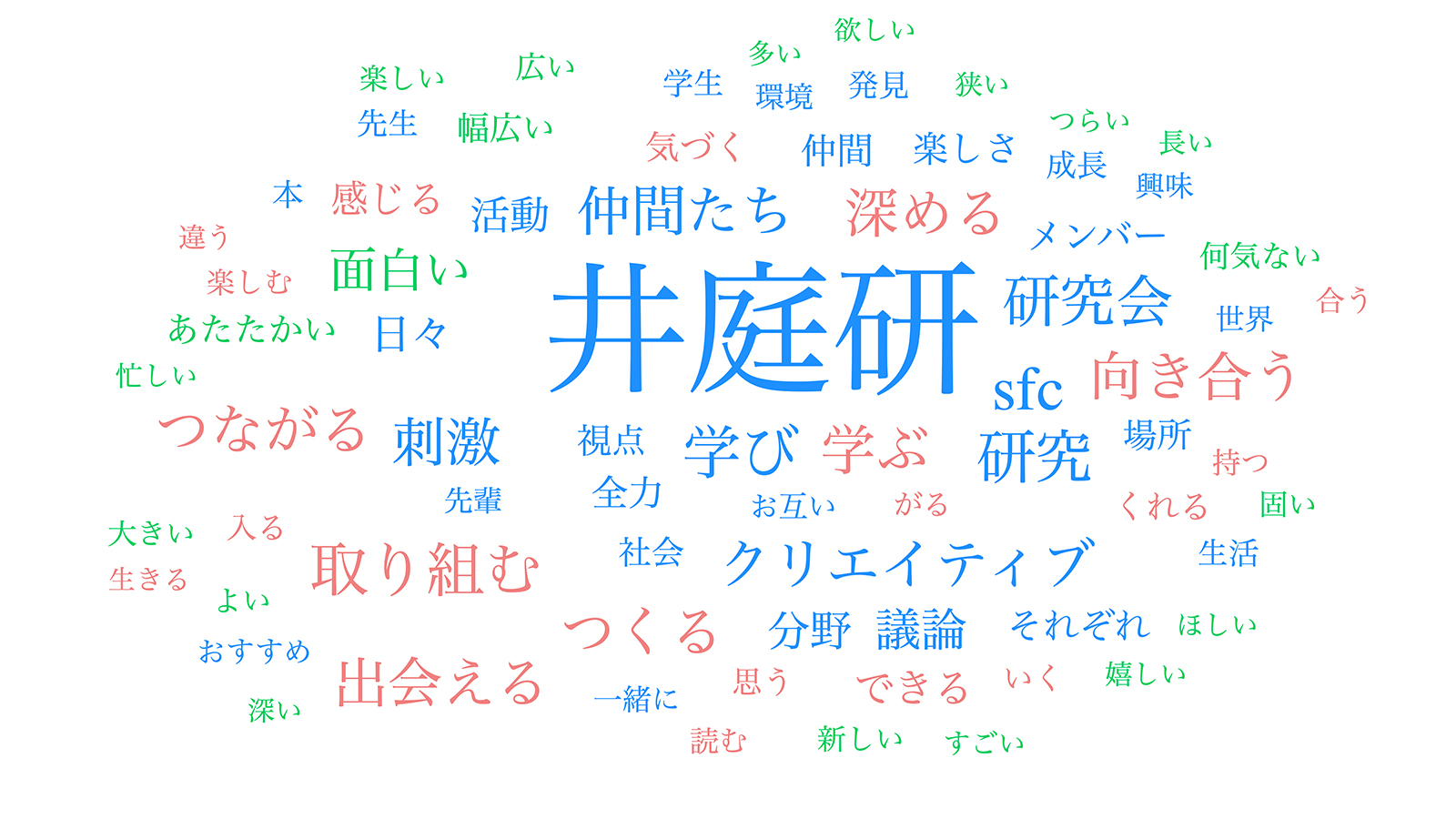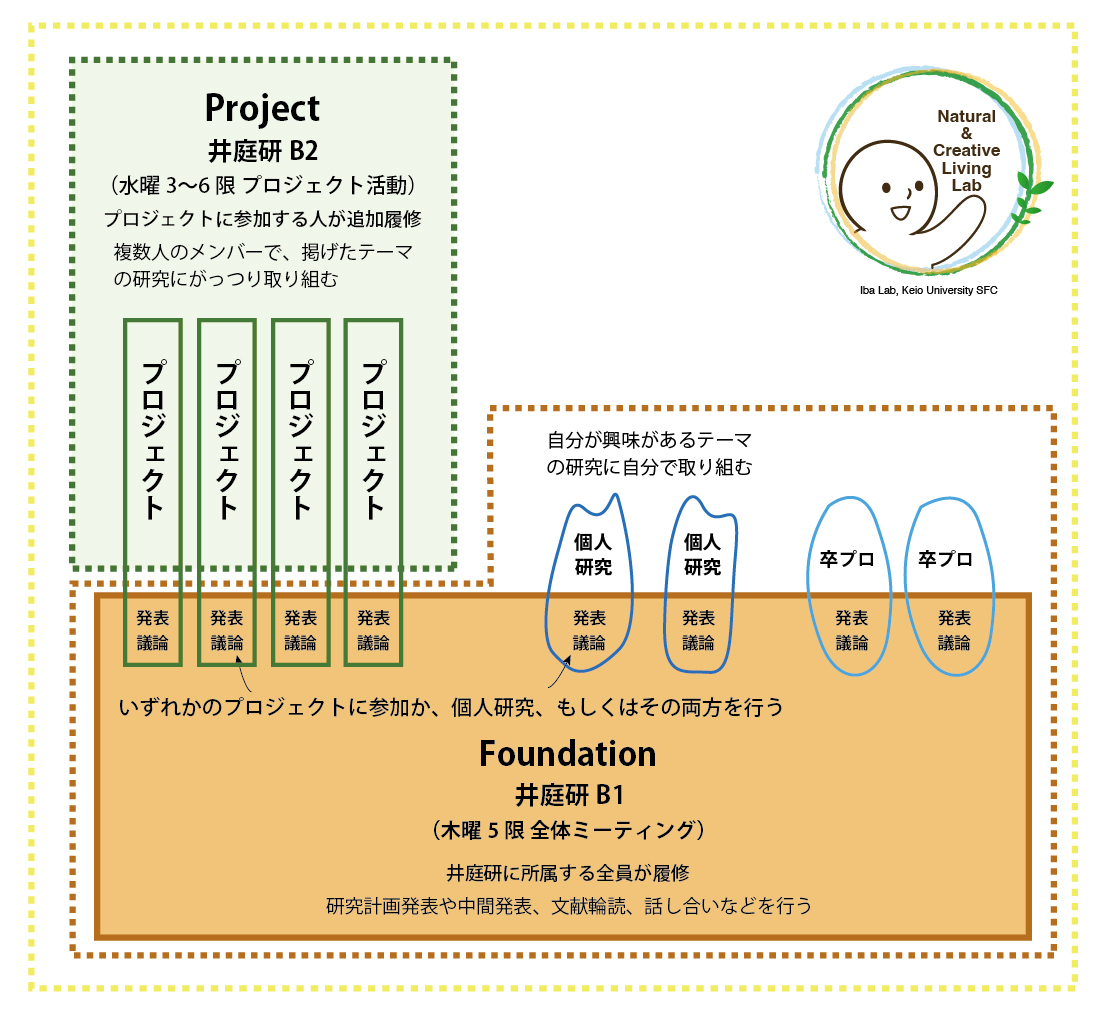Iba Lab B2 Syllabus (2023 Spring - English version) Natural & Creative Living Lab: Practicing Research Project
Iba Lab B2 Syllabus (2023 Spring - English version)
Natural & Creative Living Lab: Practicing Research Project
Important Information
From the Spring semester of 2023, Iba Lab will be offered as two Type-B research group, “Kenkyukai,” that will be linked together. Therefore, please read both this B2 syllabus and the B1 syllabus “Natural & Creative Living Lab: Studies on Creative Practice for Supporting Natural and Creative Living” to understand the entire picture.
For information on how to enter, please carefully read the Iba Lab B1 Syllabus
B2 Projects in the Natural & Creative Living Lab
We, Iba Lab, conduct practical academic research on new approaches in order to contribute toward a future where people can live more lively, by creating new ideas, concepts, methods, and media. Our vision is the creative society where people can live their life more naturally, creatively, and delightfully. Our mission is to Inquire about principles hidden in practices with great quality and support practices of people based on the discoveries.
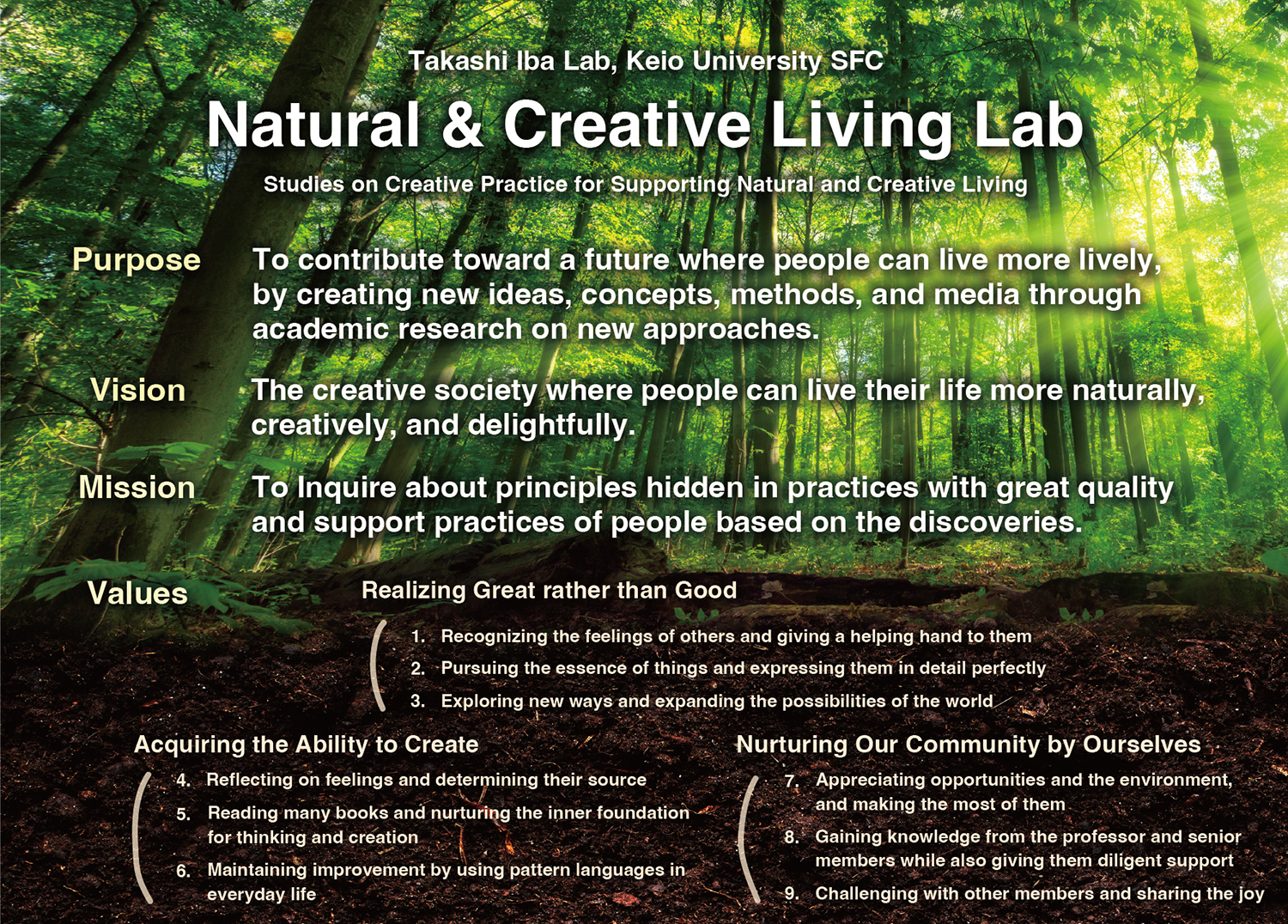
In addition to the B1 (Foundation), the foundation of the Iba Lab, many students gather on Wednesday afternoons (3rd–6th periods) for the Iba Lab B2 Project to practice their research projects (the official timetable shows Wednesday 6th period, but those who participate in the B2 project should not have classes or other schedules from 3rd period to the evening). We will all hold a “loaf of time” together to fully immerse ourselves in the project activities.
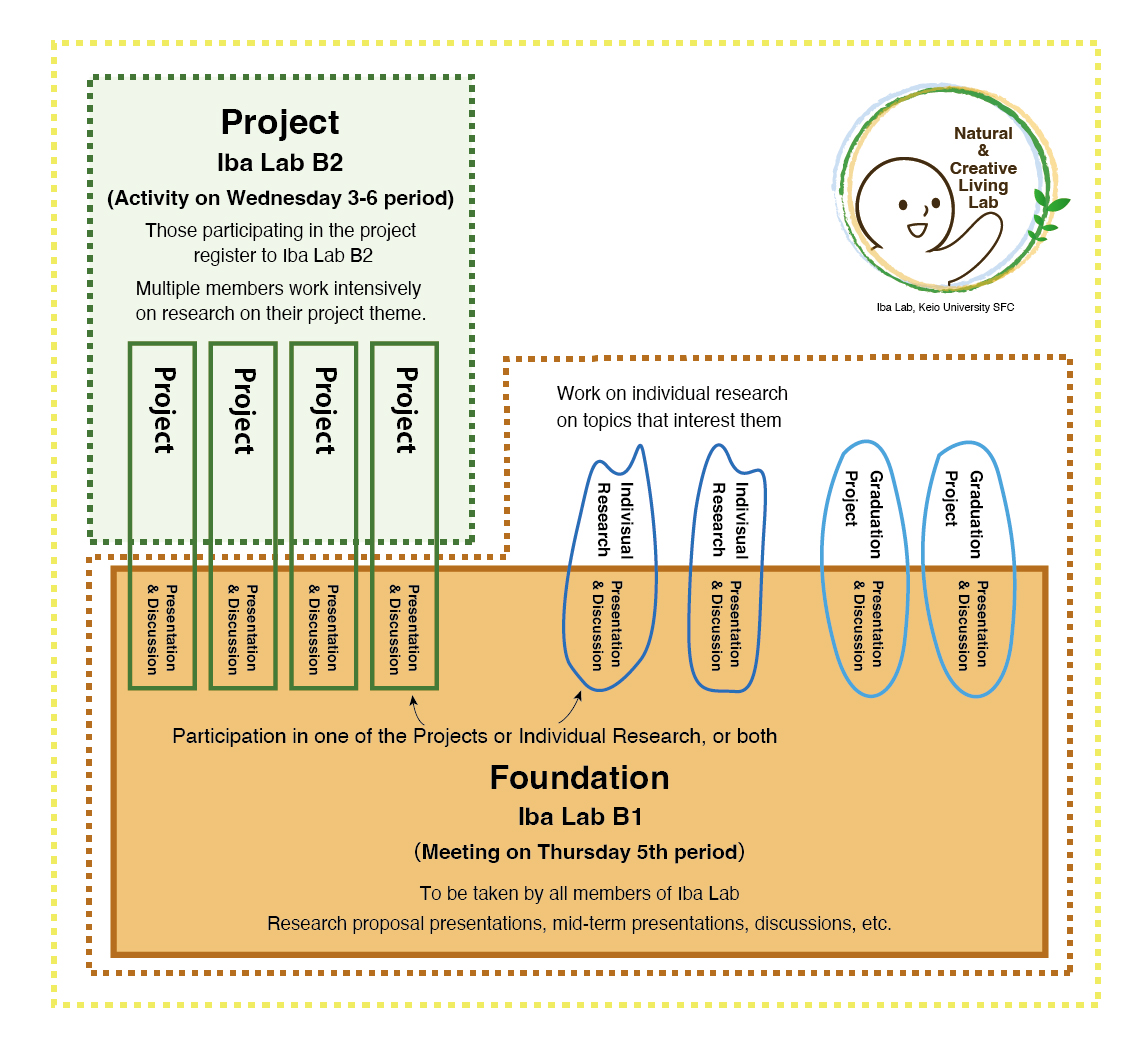
List of B2 Projects in 2023
The projects with openings for new members in 2023 are listed below. Two projects, (2) and (5) will be conducted in English, if non-Japanese-speaking GIGA students join, while other projects will be conducted in Japanese. Please check the project introduction of (2) and (5) following the list.
(1) Creating a pattern language of practices for living in harmony with nature while nurturing ecosystems.
(2) Creating a pattern language for the way of involvement which draws out the initiative of residents in the field of international cooperation.
(3) Creating a pattern language for double-goal-coaching that balances the pursuit of victory with personal growth.
(4) Creating a pattern language for the practice of “Seeing of Essence” to grasp the essence of things.
(5) Creating a pattern language for cultivating Filipino youth to live with ownership by learning from role models in the Philippines and conducting workshops with the pattern language.
(6) Conducting renewal of town image in Kesennuma using pattern language.
(7) Developing and practicing a workshop for dialogs about the greatness and uniqueness of a community.
Non-Japanese-speaking GIGA students are welcome to projects (2) and (5). The introduction of these projects are as follows:
What is Academic Research
Academic Research is an activity to explore the frontier of knowledge. There is a variety of “known areas” as a result of research and experimentation throughout our collective human history. However, there are still vast “unknown areas” in the periphery.
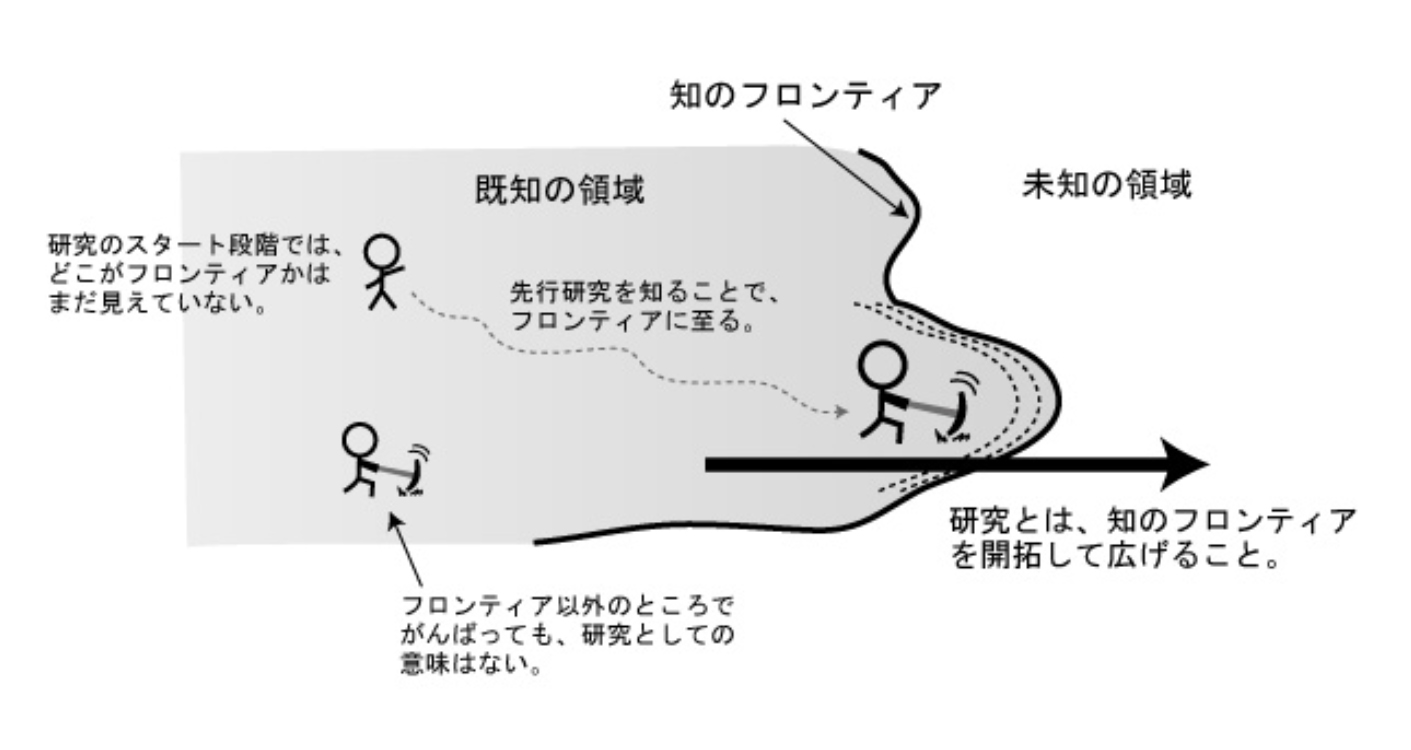
Academic research is a knowledge creation activity that pushes the frontier of knowledge. It is often a painstakingly difficult task. However, by pushing into the unknown, we are finally able to pioneer new fields and share knowledge widely with others. Thus, academic research is a creative practice involving the production of meaningful and value-added results that remain unknown or unpracticed.
One of our criteria for “good research” is that the person conducting the research must be interested in the topic, and must be passionate, and enthusiastic about it. Furthermore, the research must lead to academic significance and social value. Academic significance means that the research adds new knowledge to existing academic research and studies, and social value means that it brings added value to society and others in the present and future. Conversely, personal interest in something that “interests me” alone does not constitute “good research” (this is what leads to the difficulty of Individual Research).
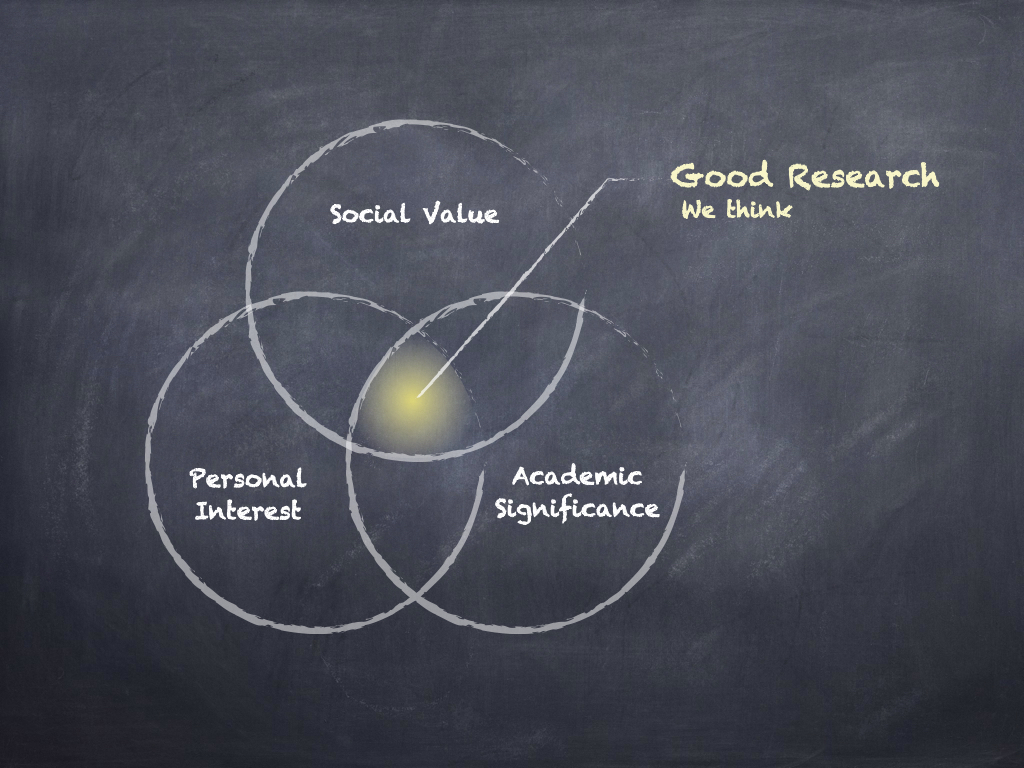
The advantage of a grade-mix, multi-person research project
It is difficult for a single person to conduct difficult and arduous academic research alone. Therefore, at the Iba Lab, combining our respective strengths together, we form a team of several people and conduct the research as a project. In addition, instead of worrying in solitude, we can progress while discussing things with project members. It is very reassuring to have teammates who are working together.
The Iba Lab projects are uniquely composed of a grade mix of students, ranging from first-year undergraduates to graduate (master or doctoral) students. The more experienced students lead the projects, while the less experienced members learn and grow through being taught. The project is both a research unit and a place for learning.
Just because you are in a lower grade does not mean that there are no opportunities for you to play an active role. Since there are many areas of contribution to a project that are enhanced by the combination of strengths, there are many ways to use skills and strengths that differ from research experience, such as a love of drawing, a command of a foreign language such as English, or good writing skills.
Therefore, we strongly encourage new members to join a Project rather than undertake Individual Research. Individual Research may seem easier because one has more freedom and does not have to coordinate time with other members and communicate with them. However, until you get used to what research is and how to undertake it, it is not easy to conduct research, and the majority of people suffer considerably. However, in a project, you can learn the basics of research while gaining research experience in a project for one or two years. Subsequently, you can start your own personal research based on your personal interests or become a graduate student and acquire the knowledge and skills to start and lead a project on your own theme.
The Iba Lab has a variety of projects with diverse themes. You should first choose the project that most closely matches your interests and grow as you work there. The projects are comfortably sized and very active creative spaces.
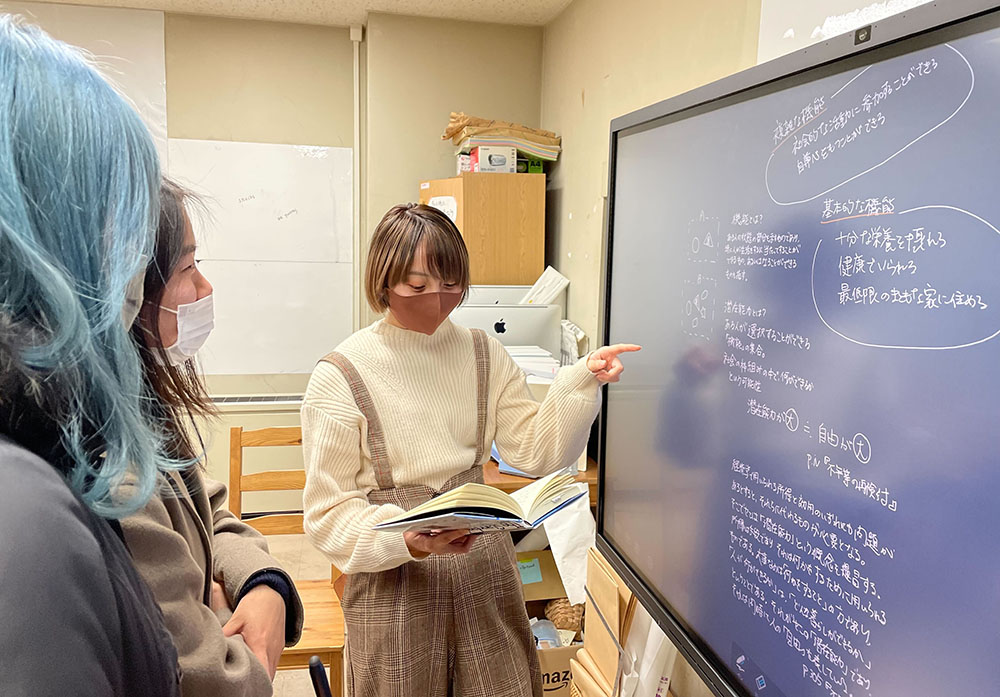
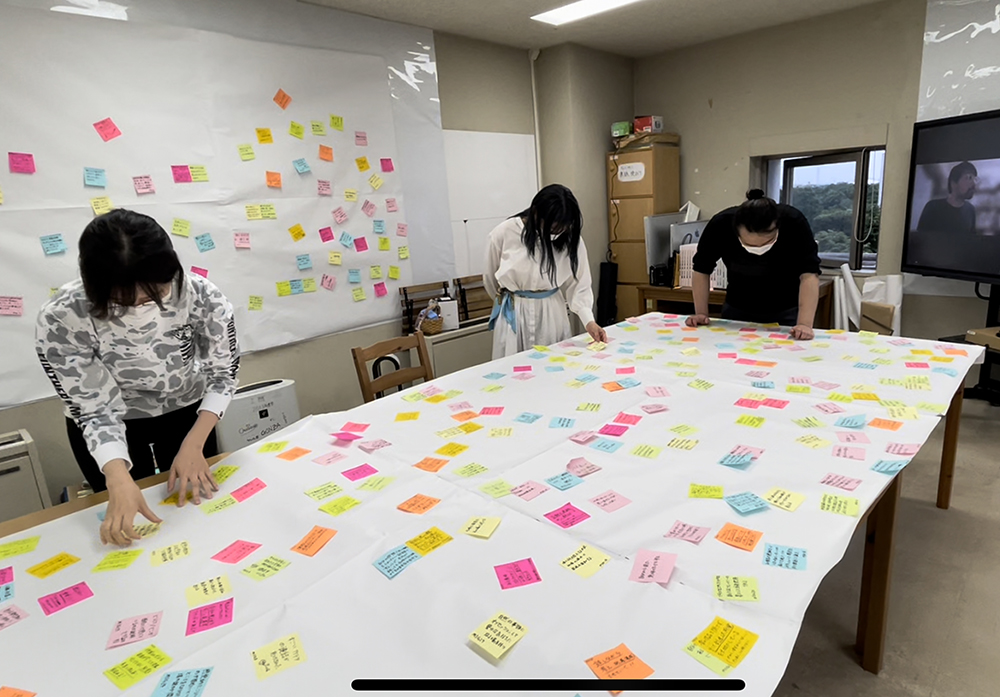
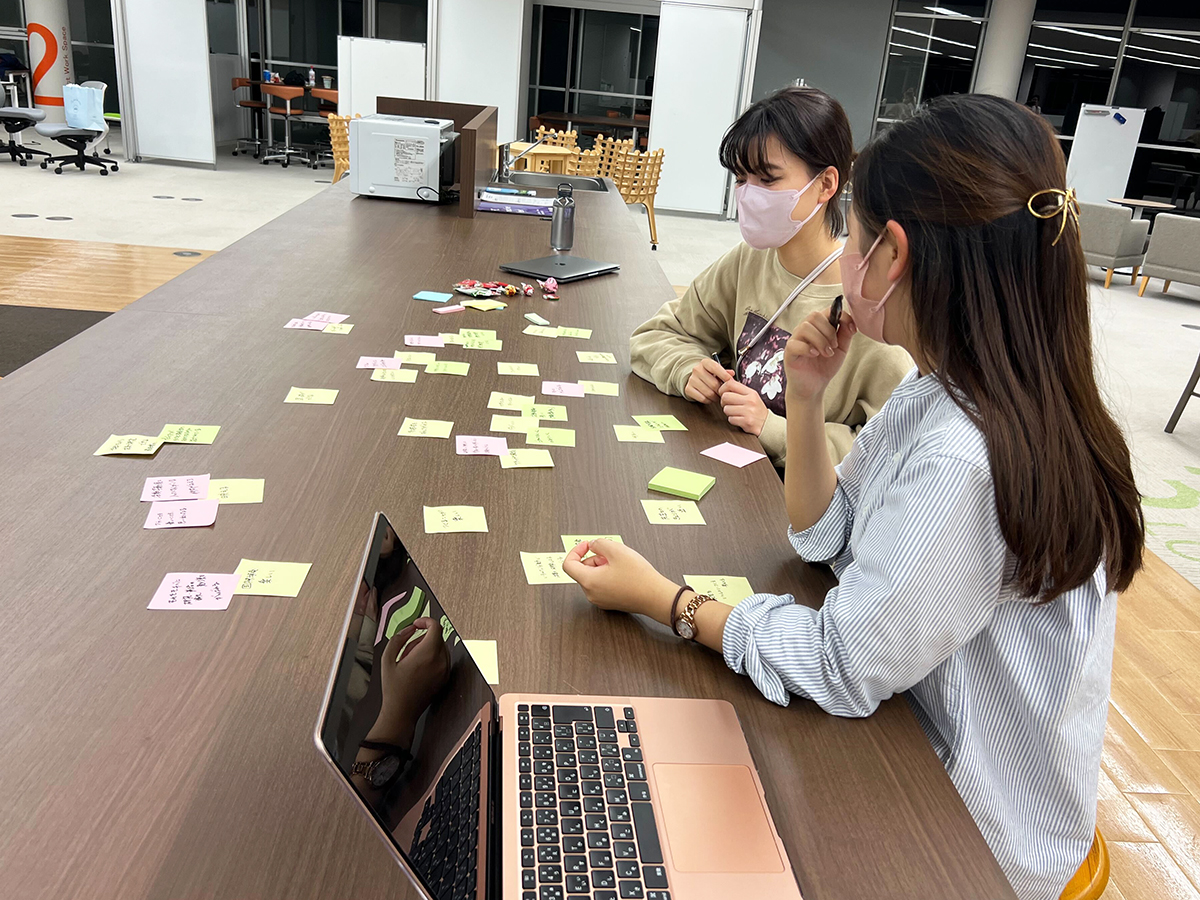
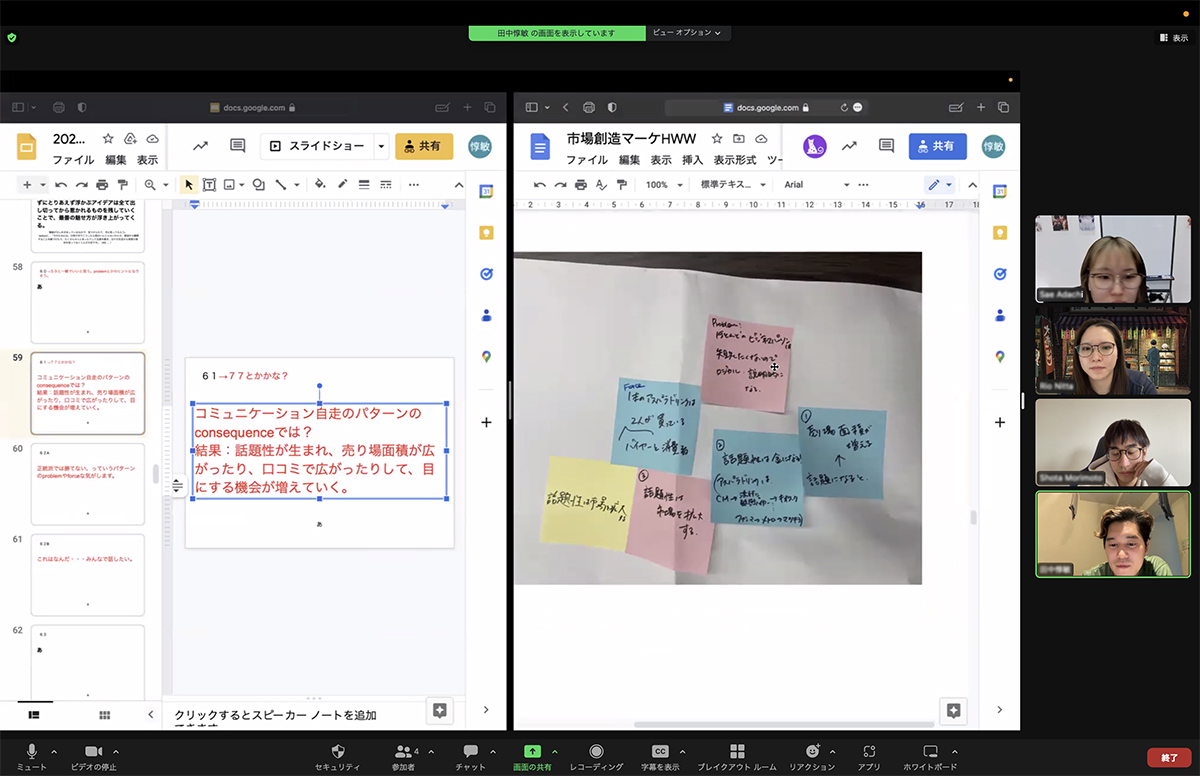
Creation Process of a Pattern Language
The Iba Lab conducts research on various approaches, such as research on creating new methods and tools, developing workshops, and investigating creative communities. However, many of our projects involve the creation of a pattern language. Although there are many researchers and practitioners of pattern language globally, the Iba Lab at SFC is the global leader in pattern language creation. Consequently, you can take advantage of the Iba Lab’s cutting-edge nature and experience in this field.
Iba Lab has been developing and refining the creation process of a pattern language for the previous 15 years. The process is as follows.
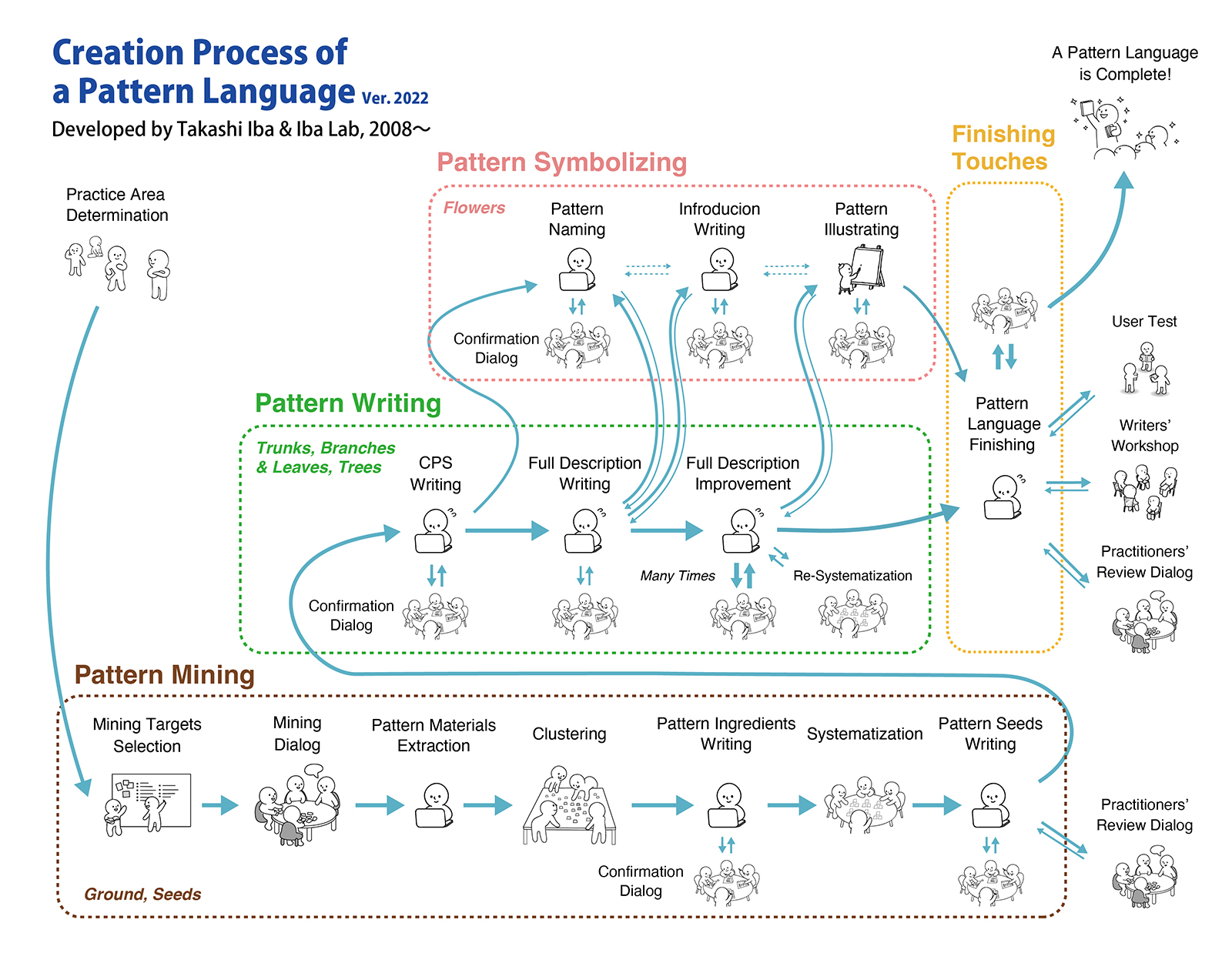
The first step is Pattern Mining, which involves obtaining information on the elements of a pattern and compiling it. “Mining” means “digging up,” and the “pattern material” is mined for creating a pattern language. Pattern materials are mined through dialogs with practitioners, and are unearthed from their narratives. This dialog is called “mining dialog.” We ask practitioners “what is important to do” (what), “how to do it specifically” (how), and “why is it important” (why) in order to produce good results in their practice.
Pattern mining typically involves talking to approximately 15–20 practitioners and obtaining hundreds of patterns of material. These materials are a collection of disparate types and sizes. Therefore, while grasping the essential meaning in each of the materials, we lean on those that are similar to each other and group those that are similar. This is called “clustering.” Consequently, we can group the similarities into dozens to hundreds of “ingredients of patterns.”
Next, we weave together the entire language system. After roughly overviewing the ingredients of the pattern and getting the big picture of what kind of potential patterns there are, we change the perspective and differentiate the essential parts from the whole. This is called “systematization.” At the conclusion of the systematization, the number of patterns should be reduced to approximately 30–40. We call this stage “pattern seeds.”
From there, we move on to the Pattern Writing stage, where we nurture the “pattern seeds.” The first thing to do is to describe the essence of each “pattern seed” in the form of “In what Context,” “what Problem is likely to occur,” and “what should be done as the Solution to prevent them.” The CPS statement is the core of the pattern. Project members continuously discuss and improve the statements as “confirmation dialogs.”
Subsequently, branches, and leaves are added to the trunk of the CPS statement. The CPS statement then describes the problem by clarifying “what Forces are at work behind the problem,” “Example of Actions for solving the problem,” and “what are the Consequences of doing so.”
These descriptions are also refined through repeated dialogs among project members to ensure that they describe the essence of the project, and they are expressed clearly. When the descriptions are being written, they are shown to the practitioners to confirm that the content is correct and that the expressions are close to what they actually feel, thereby confirming the descriptions.
The final stage of this pattern writing process is run in parallel with the Pattern Symbolizing process. This is the process of creating symbolic expressions that convey the image of the pattern’s content in a way that is both easy to grasp and attractive. Specifically, we give the pattern a name (pattern name), draw an illustration that conveys the image of the pattern’s content, and write a catchphrase-like introduction that makes people want to read the pattern description.
Pattern Symbolizing is about making trees bloom in an attractive, symbolic way. Each tree will have a different flower. They will have a sense of unity, but each individual flower will uniquely bloom. People will be attracted by the charm of the flowers and will approach each tree sequentially.
The final phase is to make the pattern text, names, illustrations more harmonious, as well as to fine-tune the overall consistency and harmony of the language and to lodge a narrative texture. Therefore, a single pattern language is completed after several hundred hours of time and effort over 1–2 years.
What was once a seed of a pattern becomes a tree with a trunk, branches, and leaves, and many of them gather to form a forest. Readers of pattern language will live with the forest and reap the “fruits” of their own practice.
I am sure now you can understand why we recommend that you enter into a Project rather than suddenly perform Individual Research, since you must master how to proceed the process described above and the specifics of each step.
Furthermore, we believe that it is best to avoid creating a pattern language by a single person due to the risk of subjective bias. In a project, multiple members check together whether the essence is correct, and discuss how it can be better expressed. Through such repetition, the pattern language approaches a universality that can be accepted by many people.
The joy of creating a work together with teammates is tremendous, and it is a wonderful experience. I hope that you will experience this deep joy of creation in the Iba Lab project.
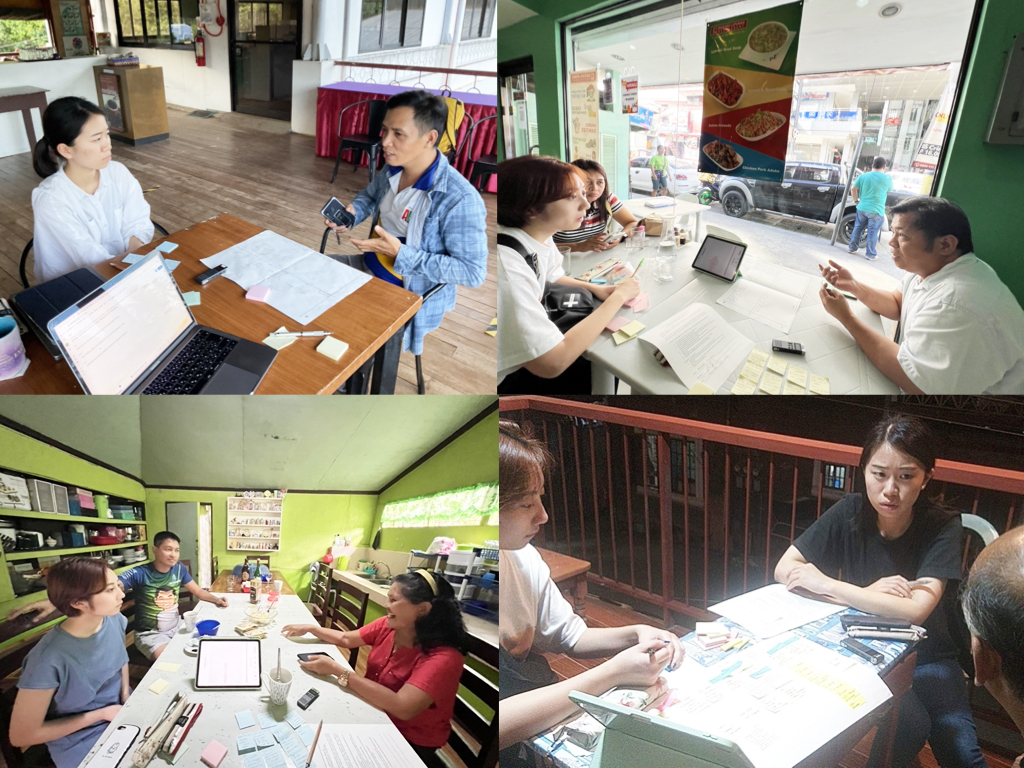
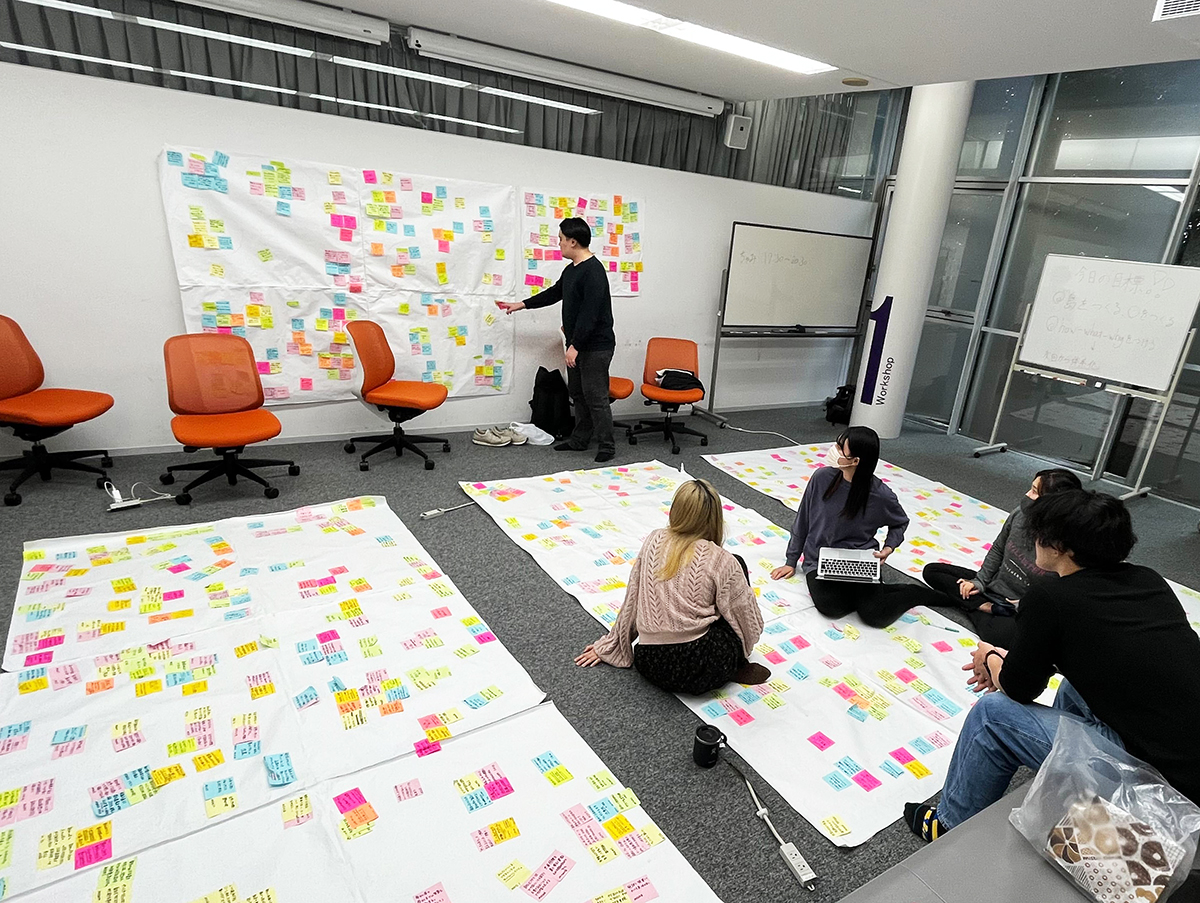
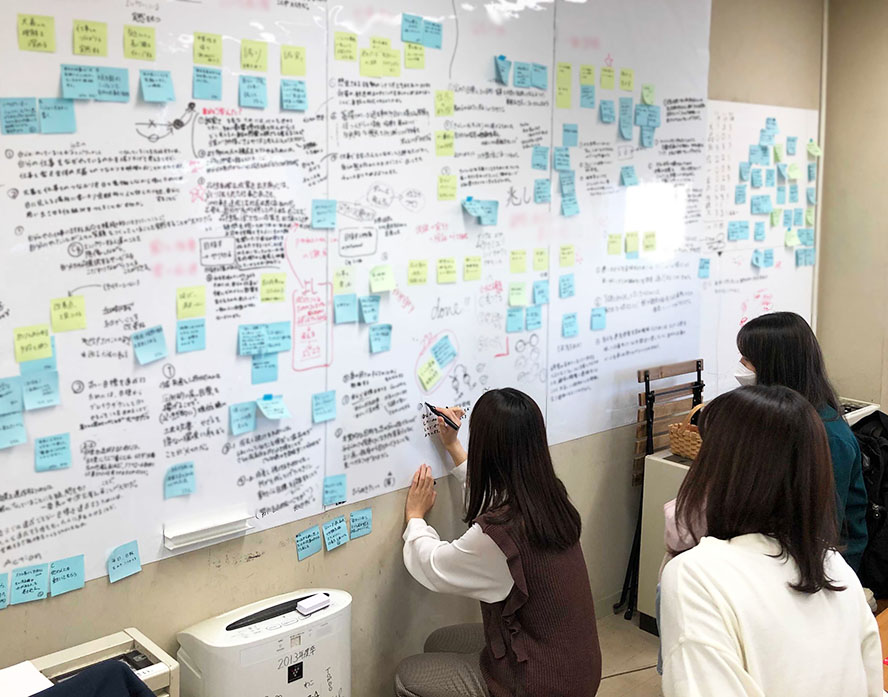
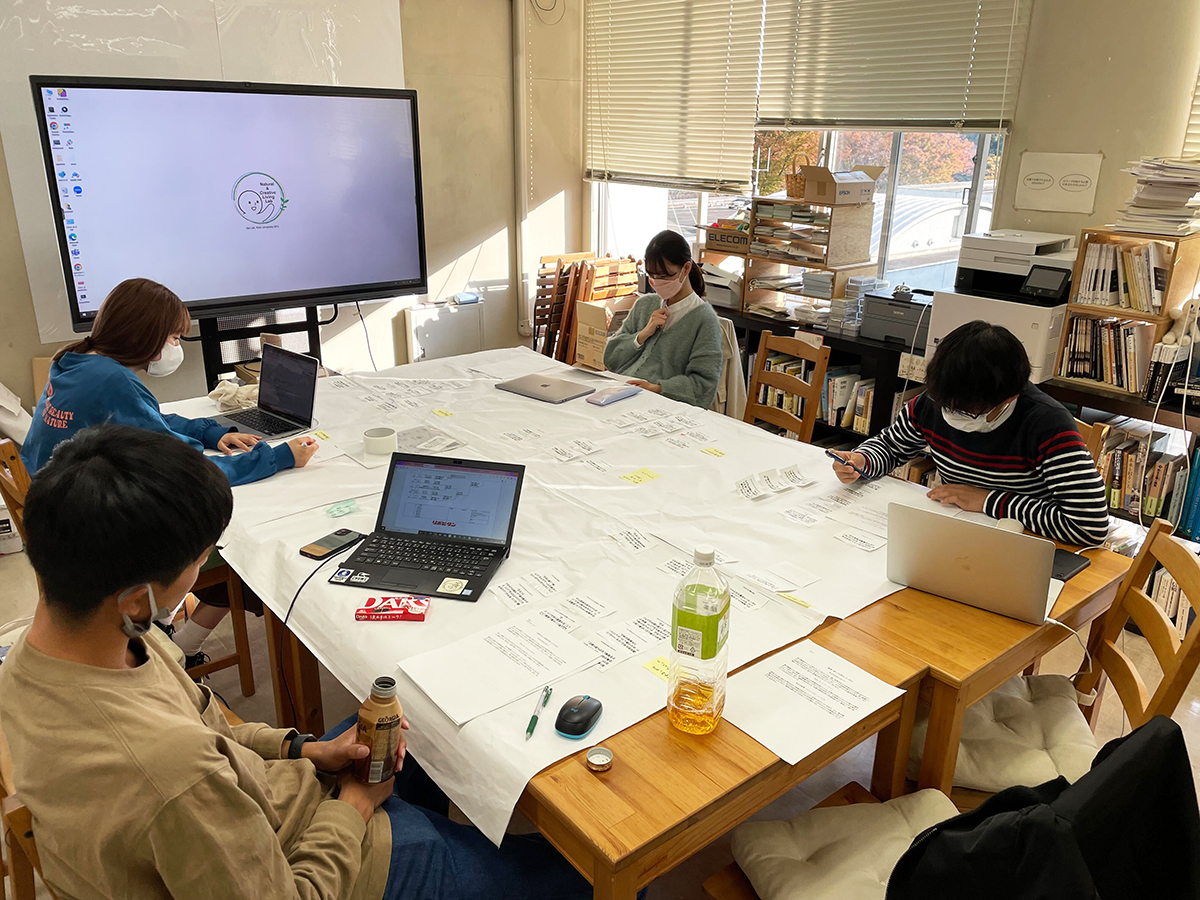
Advice
We welcome entries from current first-year students. By accumulating experience through research and activities together over a long period of time, deeper understanding and strength can be gained, which will enable for more active roles in the lab later on. For this reason, Iba Lab encourages students to start taking courses and participating in activities early in their careers.
In principle, the Iba Lab does not accept 4th year students, unless there is a special reason to do so. Please plan carefully to enter the research group at an early stage so that you will not be in a hurry to join a research group at the stage of your graduation project.
We very much welcome GIGA students, people with overseas experience, and international students. In addition to creating results in Japanese, Iba Lab writes papers in English and presents them at international conferences, and conducts workshops at overseas universities and conferences. Being able to speak a language other than Japanese will greatly increase chances of participation and contribution. Please lend us your help.
In principle, all Iba Lab members are expected to participate in Iba lab B1; however, if you have special circumstances, such as wanting to join a project of Iba Lab B2 while belonging to another research group (Type A), please consult with us in advance by sending an e-mail to ilab-entry@sfc.keio.ac.jp.
Assignments, Examination & Grade Evaluation
Grading will be based on student’s effort in the projects and his/her growth through learning.
How to enter to Iba Lab B1 and B2
For information on how to enter, please carefully read the “How to enter to Iba Lab B1 and B2” section of the Iba Lab B1 Syllabus (Spring Semester 2023) “Natural & Creative Living Lab: Creative Practice Studies to Support Natural and Creative Living” and submit files accordingly.
Newcomer Entry Deadline: January 29 (Sun), 23:59
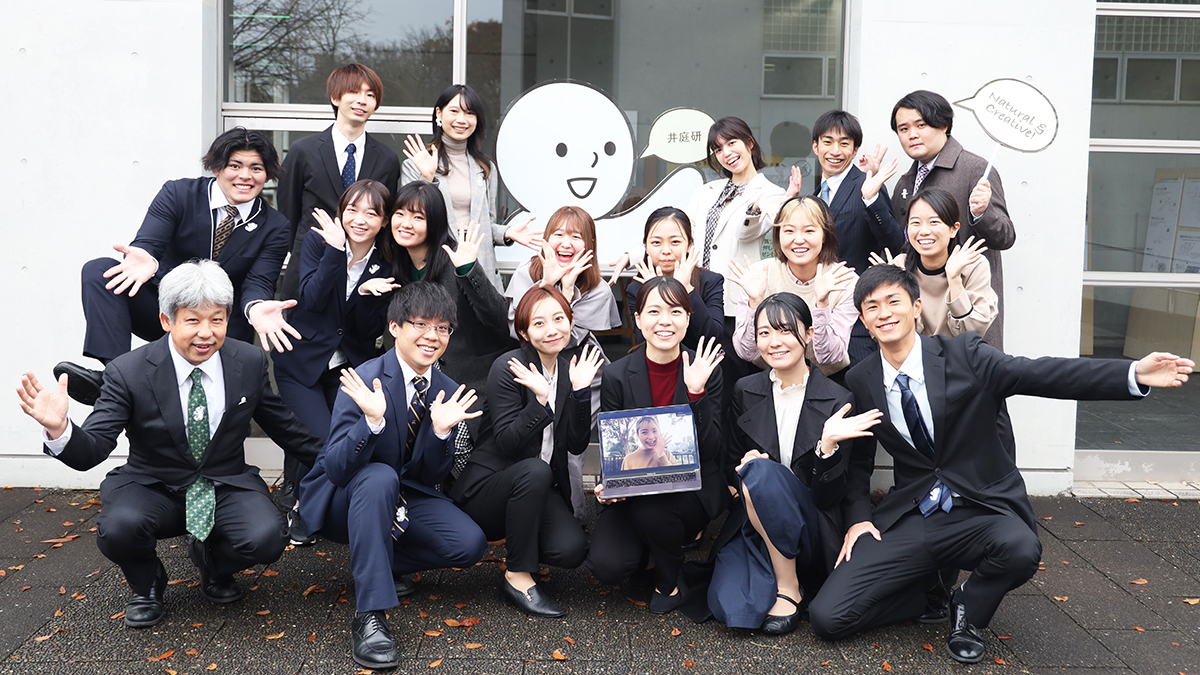
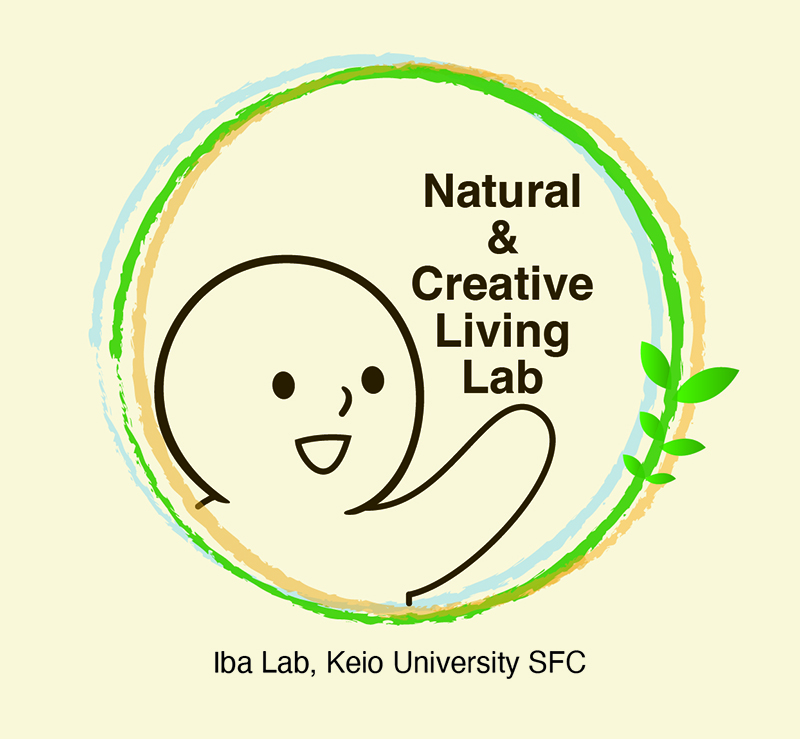 Back to Iba Lab B1 Syllabus (Spring Semester 2023) “Natural & Creative Living Lab: Creative Practice Studies to Support Natural and Creative Living”
Back to Iba Lab B1 Syllabus (Spring Semester 2023) “Natural & Creative Living Lab: Creative Practice Studies to Support Natural and Creative Living”
Natural & Creative Living Lab: Practicing Research Project
Important Information
From the Spring semester of 2023, Iba Lab will be offered as two Type-B research group, “Kenkyukai,” that will be linked together. Therefore, please read both this B2 syllabus and the B1 syllabus “Natural & Creative Living Lab: Studies on Creative Practice for Supporting Natural and Creative Living” to understand the entire picture.
- Newcomer Entry Deadline: January 29 (Sun), 23:59
B2 Projects in the Natural & Creative Living Lab
We, Iba Lab, conduct practical academic research on new approaches in order to contribute toward a future where people can live more lively, by creating new ideas, concepts, methods, and media. Our vision is the creative society where people can live their life more naturally, creatively, and delightfully. Our mission is to Inquire about principles hidden in practices with great quality and support practices of people based on the discoveries.

In addition to the B1 (Foundation), the foundation of the Iba Lab, many students gather on Wednesday afternoons (3rd–6th periods) for the Iba Lab B2 Project to practice their research projects (the official timetable shows Wednesday 6th period, but those who participate in the B2 project should not have classes or other schedules from 3rd period to the evening). We will all hold a “loaf of time” together to fully immerse ourselves in the project activities.

List of B2 Projects in 2023
The projects with openings for new members in 2023 are listed below. Two projects, (2) and (5) will be conducted in English, if non-Japanese-speaking GIGA students join, while other projects will be conducted in Japanese. Please check the project introduction of (2) and (5) following the list.
(1) Creating a pattern language of practices for living in harmony with nature while nurturing ecosystems.
(2) Creating a pattern language for the way of involvement which draws out the initiative of residents in the field of international cooperation.
(3) Creating a pattern language for double-goal-coaching that balances the pursuit of victory with personal growth.
(4) Creating a pattern language for the practice of “Seeing of Essence” to grasp the essence of things.
(5) Creating a pattern language for cultivating Filipino youth to live with ownership by learning from role models in the Philippines and conducting workshops with the pattern language.
(6) Conducting renewal of town image in Kesennuma using pattern language.
(7) Developing and practicing a workshop for dialogs about the greatness and uniqueness of a community.
Non-Japanese-speaking GIGA students are welcome to projects (2) and (5). The introduction of these projects are as follows:
(2) Creating a pattern language for the way of involvement which draws out the initiative of residents in the field of international cooperation.
In recent years, “Participatory Development,” in which residents are involved as stakeholders, has become the mainstream concept in the field of international cooperation. This concept was originally developed to avoid forcing developed countries to impose their assistance to developing countries; however, the structure of local people taking the initiative has itself become a mere formality, as the local people’s opinions are only formally gathered. In this study, we will research effective ways to engage with local residents in order to increase their autonomy while working together to solve problems. Specifically, we will conduct interviews with local NGOs working on Mindanao Island in the Philippines and Japanese NGOs that have created shared villages, and clarify how they realize collaboration that does not deprive residents of their autonomy. We hope to learn together and consider how international cooperation can be created beyond the dichotomy of supporting and being supported, while returning to the question, “What is international cooperation?” Two or three new members are welcome to join. [Project Leader: Mizuki Ota]
(5) Creating a pattern language for cultivating Filipino youth to live with ownership by learning from role models in the Philippines and conducting workshops with the pattern language.
In the Philippines, there are many children without access to adequate education and young people who are consequently unable to find work. However, there are those who have achieved financial independence and continued work despite their family backgrounds and economic difficulties. We will reveal the practices of role models in the Philippines, and describe how to practice as a pattern language. In addition, we will develop, and implement workshops that utilize the pattern language and attempt to empower Filipino youth. We welcome those who are interested in conducting research and practice that will support and guide the lives and livelihoods of the local people. Although our target is the Filipino people, we can apply to our own daily lives and way of living as part of our research. Why don’t you join us and undertake research to encourage the youth of the Philippines? [Project Leader: Takako Kanai]
What is Academic Research
Academic Research is an activity to explore the frontier of knowledge. There is a variety of “known areas” as a result of research and experimentation throughout our collective human history. However, there are still vast “unknown areas” in the periphery.

Academic research is a knowledge creation activity that pushes the frontier of knowledge. It is often a painstakingly difficult task. However, by pushing into the unknown, we are finally able to pioneer new fields and share knowledge widely with others. Thus, academic research is a creative practice involving the production of meaningful and value-added results that remain unknown or unpracticed.
One of our criteria for “good research” is that the person conducting the research must be interested in the topic, and must be passionate, and enthusiastic about it. Furthermore, the research must lead to academic significance and social value. Academic significance means that the research adds new knowledge to existing academic research and studies, and social value means that it brings added value to society and others in the present and future. Conversely, personal interest in something that “interests me” alone does not constitute “good research” (this is what leads to the difficulty of Individual Research).

The advantage of a grade-mix, multi-person research project
It is difficult for a single person to conduct difficult and arduous academic research alone. Therefore, at the Iba Lab, combining our respective strengths together, we form a team of several people and conduct the research as a project. In addition, instead of worrying in solitude, we can progress while discussing things with project members. It is very reassuring to have teammates who are working together.
The Iba Lab projects are uniquely composed of a grade mix of students, ranging from first-year undergraduates to graduate (master or doctoral) students. The more experienced students lead the projects, while the less experienced members learn and grow through being taught. The project is both a research unit and a place for learning.
Just because you are in a lower grade does not mean that there are no opportunities for you to play an active role. Since there are many areas of contribution to a project that are enhanced by the combination of strengths, there are many ways to use skills and strengths that differ from research experience, such as a love of drawing, a command of a foreign language such as English, or good writing skills.
Therefore, we strongly encourage new members to join a Project rather than undertake Individual Research. Individual Research may seem easier because one has more freedom and does not have to coordinate time with other members and communicate with them. However, until you get used to what research is and how to undertake it, it is not easy to conduct research, and the majority of people suffer considerably. However, in a project, you can learn the basics of research while gaining research experience in a project for one or two years. Subsequently, you can start your own personal research based on your personal interests or become a graduate student and acquire the knowledge and skills to start and lead a project on your own theme.
The Iba Lab has a variety of projects with diverse themes. You should first choose the project that most closely matches your interests and grow as you work there. The projects are comfortably sized and very active creative spaces.




Creation Process of a Pattern Language
The Iba Lab conducts research on various approaches, such as research on creating new methods and tools, developing workshops, and investigating creative communities. However, many of our projects involve the creation of a pattern language. Although there are many researchers and practitioners of pattern language globally, the Iba Lab at SFC is the global leader in pattern language creation. Consequently, you can take advantage of the Iba Lab’s cutting-edge nature and experience in this field.
Iba Lab has been developing and refining the creation process of a pattern language for the previous 15 years. The process is as follows.

The first step is Pattern Mining, which involves obtaining information on the elements of a pattern and compiling it. “Mining” means “digging up,” and the “pattern material” is mined for creating a pattern language. Pattern materials are mined through dialogs with practitioners, and are unearthed from their narratives. This dialog is called “mining dialog.” We ask practitioners “what is important to do” (what), “how to do it specifically” (how), and “why is it important” (why) in order to produce good results in their practice.
Pattern mining typically involves talking to approximately 15–20 practitioners and obtaining hundreds of patterns of material. These materials are a collection of disparate types and sizes. Therefore, while grasping the essential meaning in each of the materials, we lean on those that are similar to each other and group those that are similar. This is called “clustering.” Consequently, we can group the similarities into dozens to hundreds of “ingredients of patterns.”
Next, we weave together the entire language system. After roughly overviewing the ingredients of the pattern and getting the big picture of what kind of potential patterns there are, we change the perspective and differentiate the essential parts from the whole. This is called “systematization.” At the conclusion of the systematization, the number of patterns should be reduced to approximately 30–40. We call this stage “pattern seeds.”
From there, we move on to the Pattern Writing stage, where we nurture the “pattern seeds.” The first thing to do is to describe the essence of each “pattern seed” in the form of “In what Context,” “what Problem is likely to occur,” and “what should be done as the Solution to prevent them.” The CPS statement is the core of the pattern. Project members continuously discuss and improve the statements as “confirmation dialogs.”
Subsequently, branches, and leaves are added to the trunk of the CPS statement. The CPS statement then describes the problem by clarifying “what Forces are at work behind the problem,” “Example of Actions for solving the problem,” and “what are the Consequences of doing so.”
These descriptions are also refined through repeated dialogs among project members to ensure that they describe the essence of the project, and they are expressed clearly. When the descriptions are being written, they are shown to the practitioners to confirm that the content is correct and that the expressions are close to what they actually feel, thereby confirming the descriptions.
The final stage of this pattern writing process is run in parallel with the Pattern Symbolizing process. This is the process of creating symbolic expressions that convey the image of the pattern’s content in a way that is both easy to grasp and attractive. Specifically, we give the pattern a name (pattern name), draw an illustration that conveys the image of the pattern’s content, and write a catchphrase-like introduction that makes people want to read the pattern description.
Pattern Symbolizing is about making trees bloom in an attractive, symbolic way. Each tree will have a different flower. They will have a sense of unity, but each individual flower will uniquely bloom. People will be attracted by the charm of the flowers and will approach each tree sequentially.
The final phase is to make the pattern text, names, illustrations more harmonious, as well as to fine-tune the overall consistency and harmony of the language and to lodge a narrative texture. Therefore, a single pattern language is completed after several hundred hours of time and effort over 1–2 years.
What was once a seed of a pattern becomes a tree with a trunk, branches, and leaves, and many of them gather to form a forest. Readers of pattern language will live with the forest and reap the “fruits” of their own practice.
I am sure now you can understand why we recommend that you enter into a Project rather than suddenly perform Individual Research, since you must master how to proceed the process described above and the specifics of each step.
Furthermore, we believe that it is best to avoid creating a pattern language by a single person due to the risk of subjective bias. In a project, multiple members check together whether the essence is correct, and discuss how it can be better expressed. Through such repetition, the pattern language approaches a universality that can be accepted by many people.
The joy of creating a work together with teammates is tremendous, and it is a wonderful experience. I hope that you will experience this deep joy of creation in the Iba Lab project.




Advice
Assignments, Examination & Grade Evaluation
Grading will be based on student’s effort in the projects and his/her growth through learning.
How to enter to Iba Lab B1 and B2
For information on how to enter, please carefully read the “How to enter to Iba Lab B1 and B2” section of the Iba Lab B1 Syllabus (Spring Semester 2023) “Natural & Creative Living Lab: Creative Practice Studies to Support Natural and Creative Living” and submit files accordingly.
Newcomer Entry Deadline: January 29 (Sun), 23:59

 Back to Iba Lab B1 Syllabus (Spring Semester 2023) “Natural & Creative Living Lab: Creative Practice Studies to Support Natural and Creative Living”
Back to Iba Lab B1 Syllabus (Spring Semester 2023) “Natural & Creative Living Lab: Creative Practice Studies to Support Natural and Creative Living” 井庭研だより | - | -
